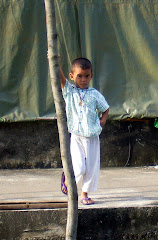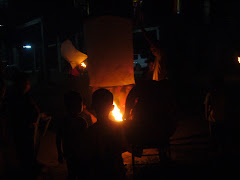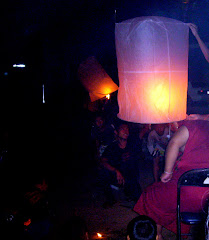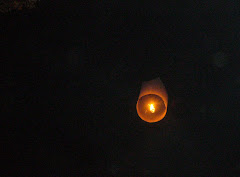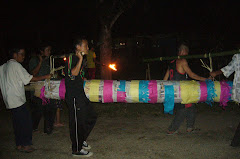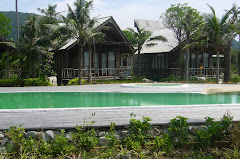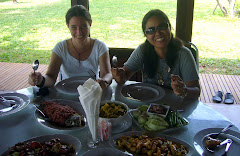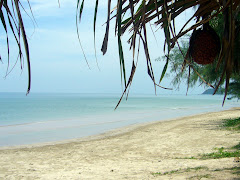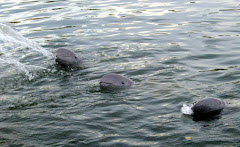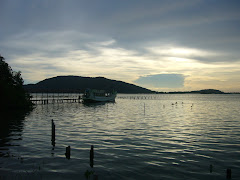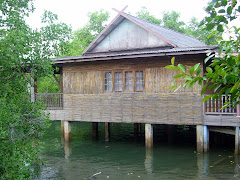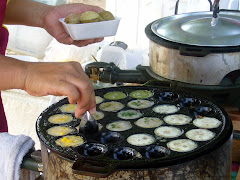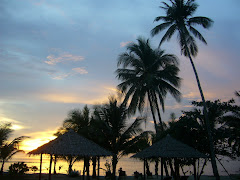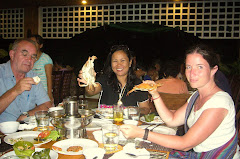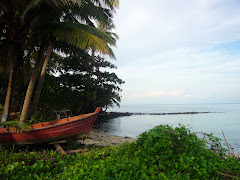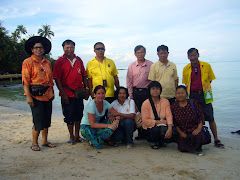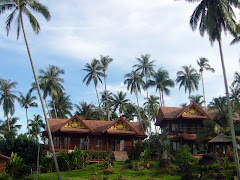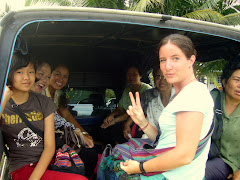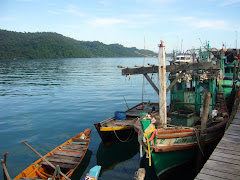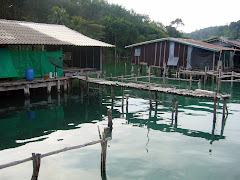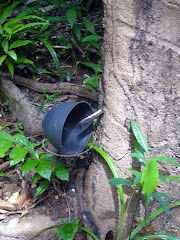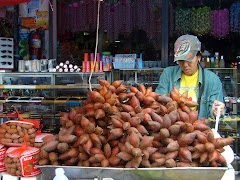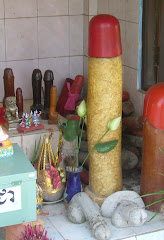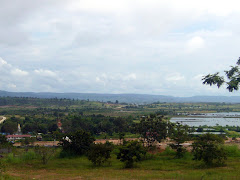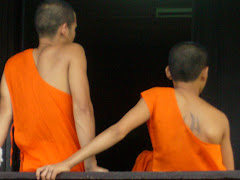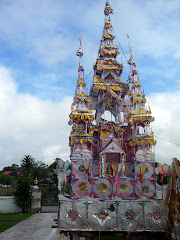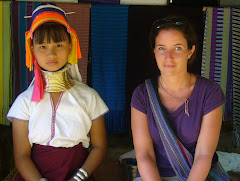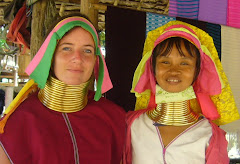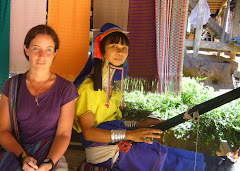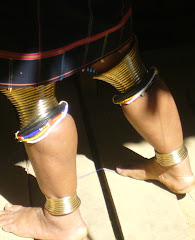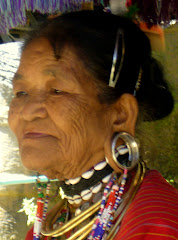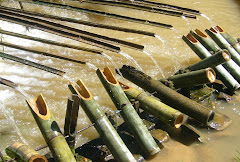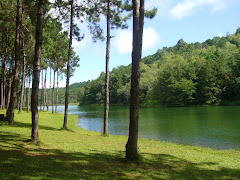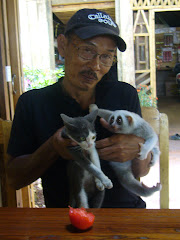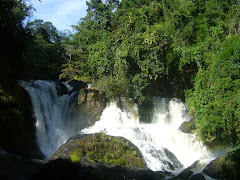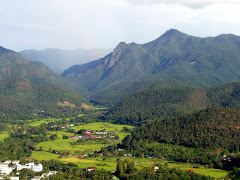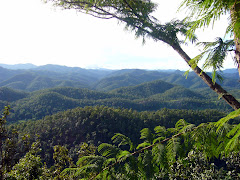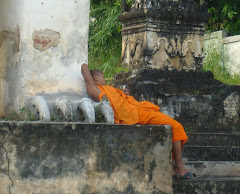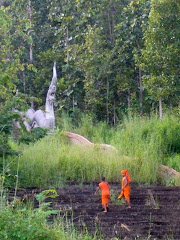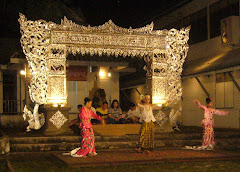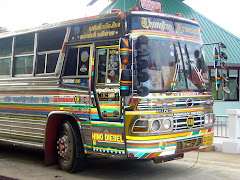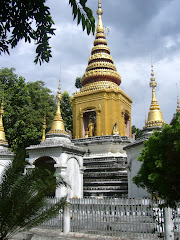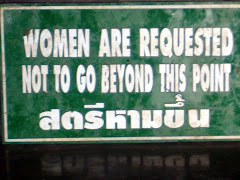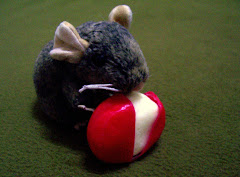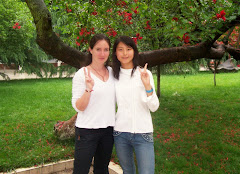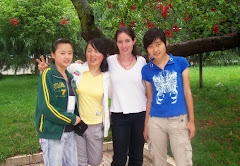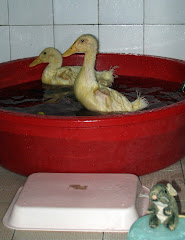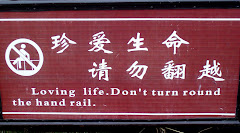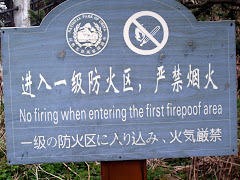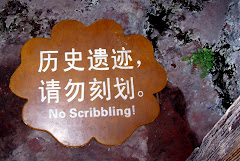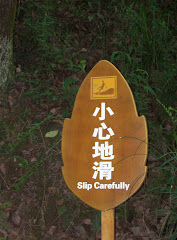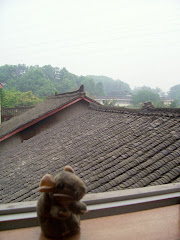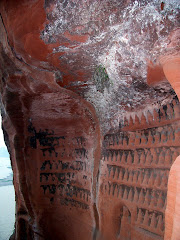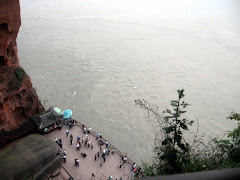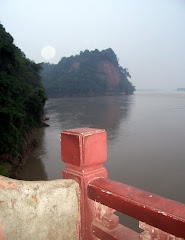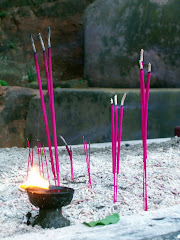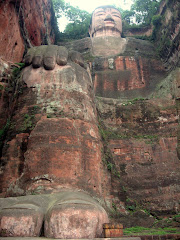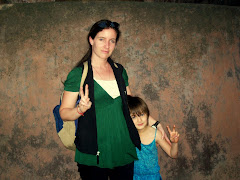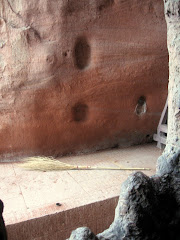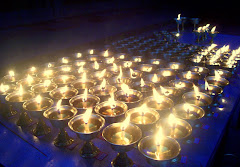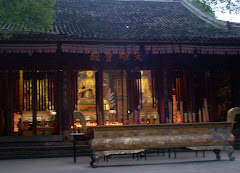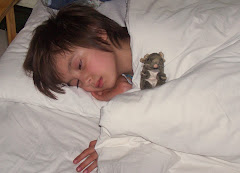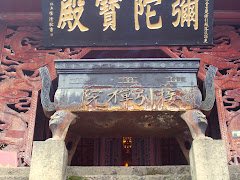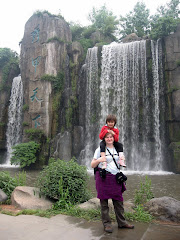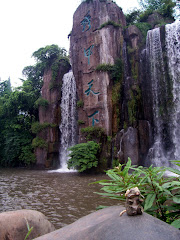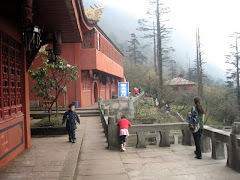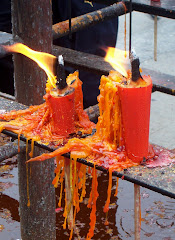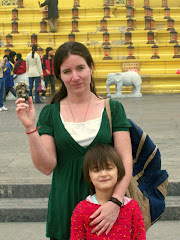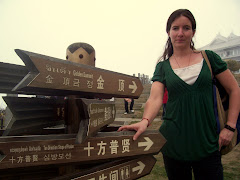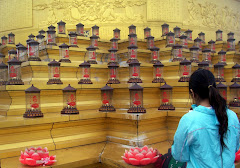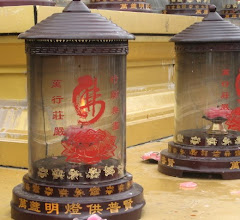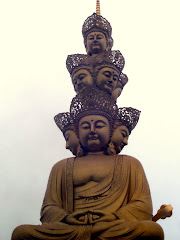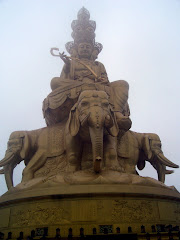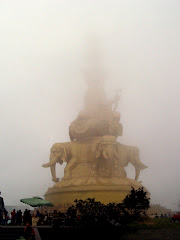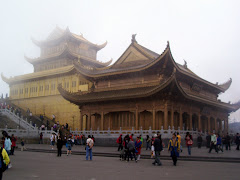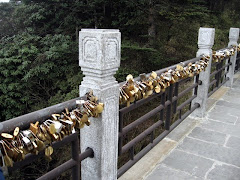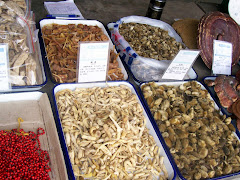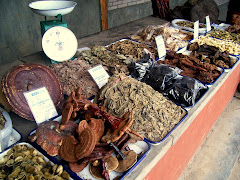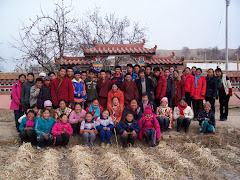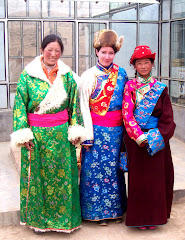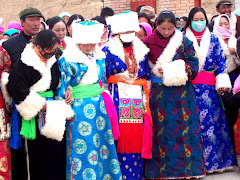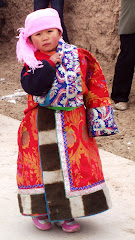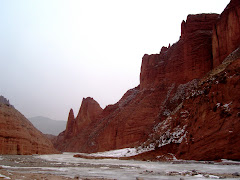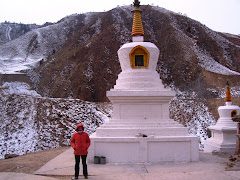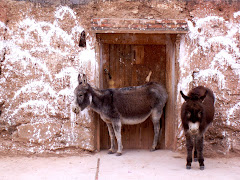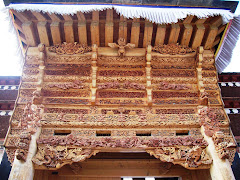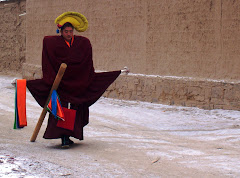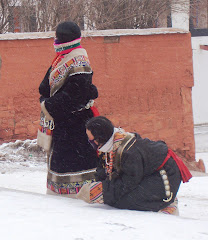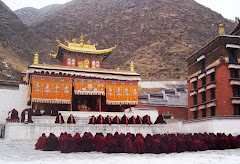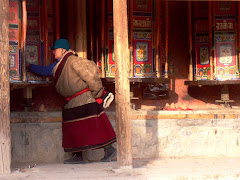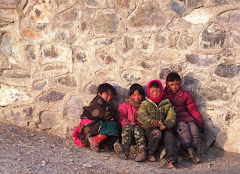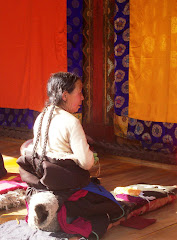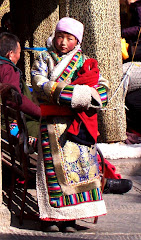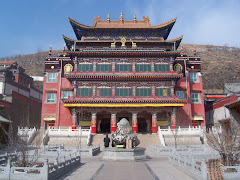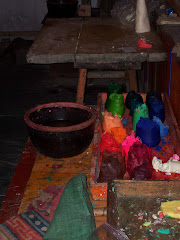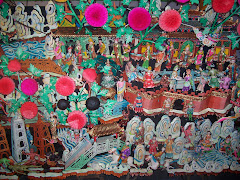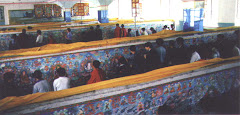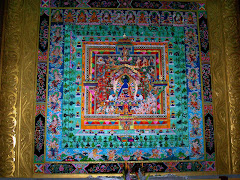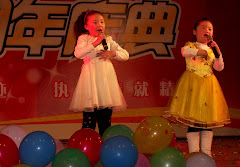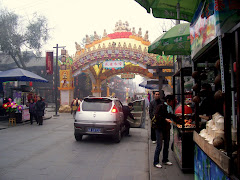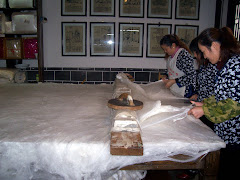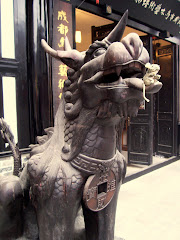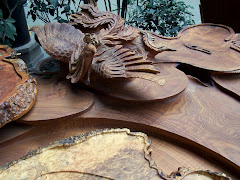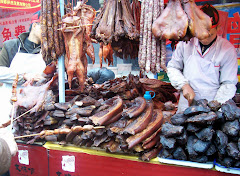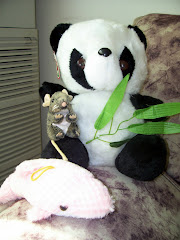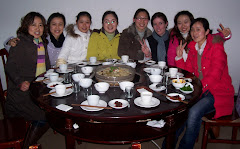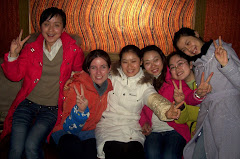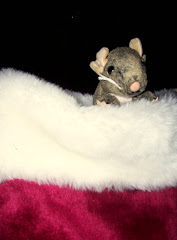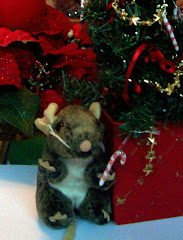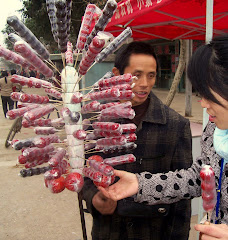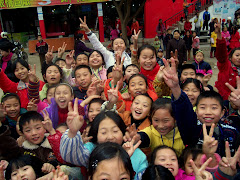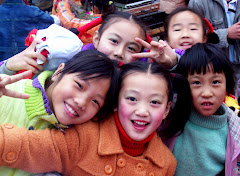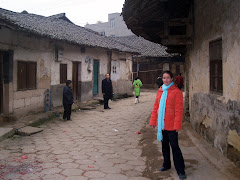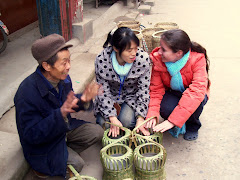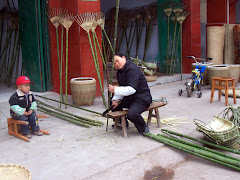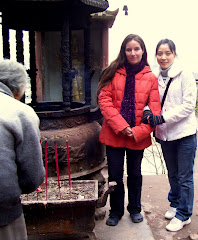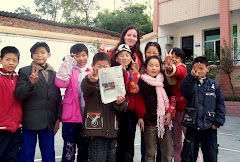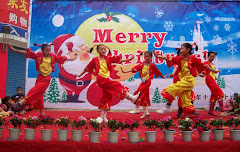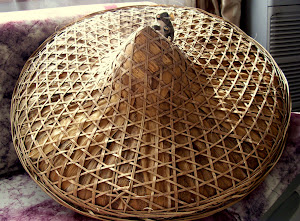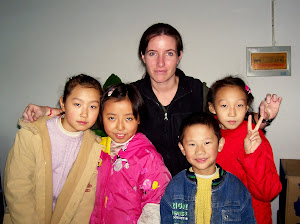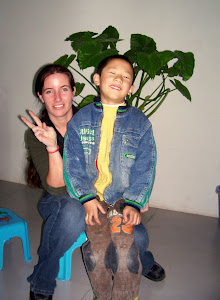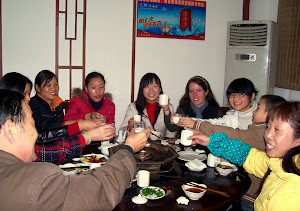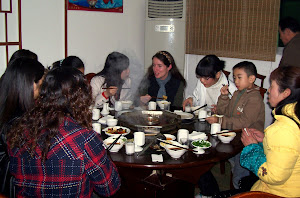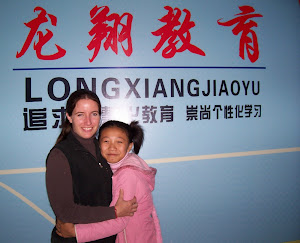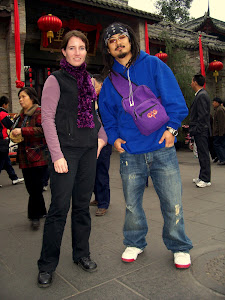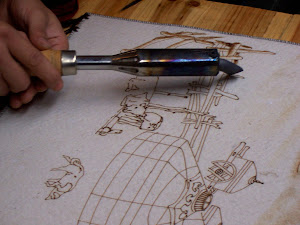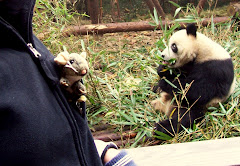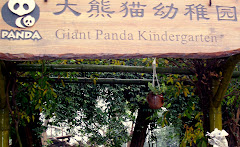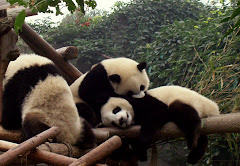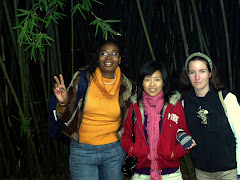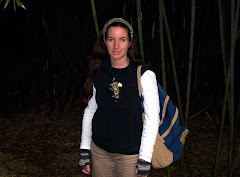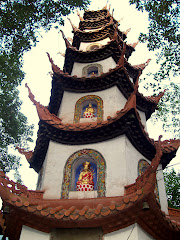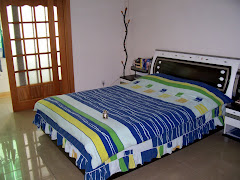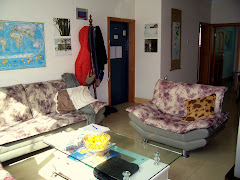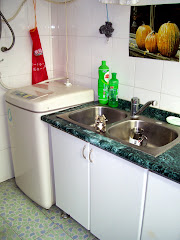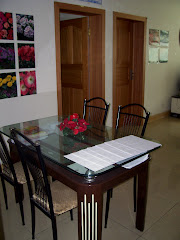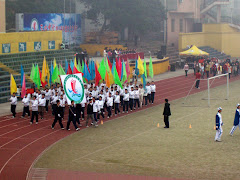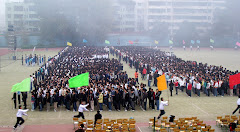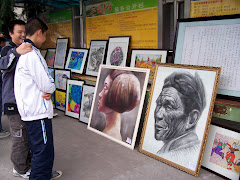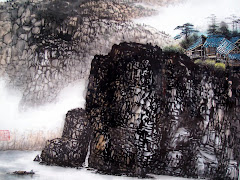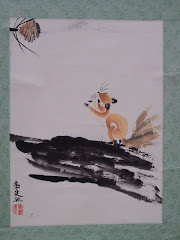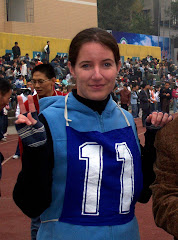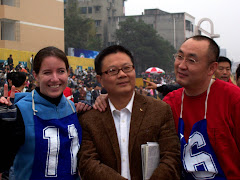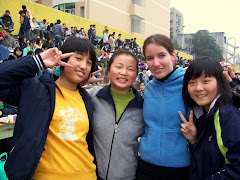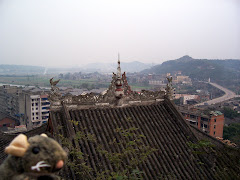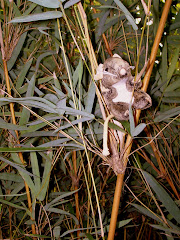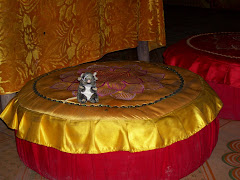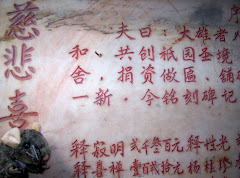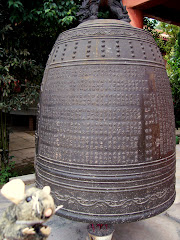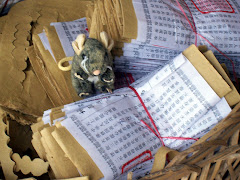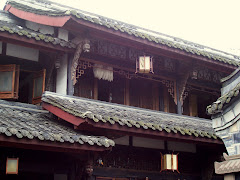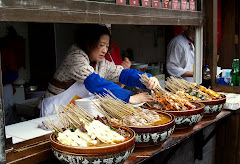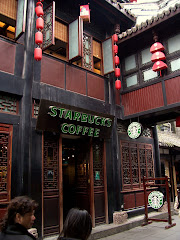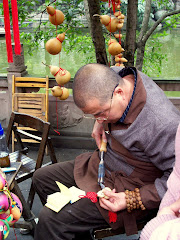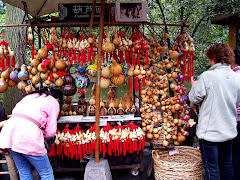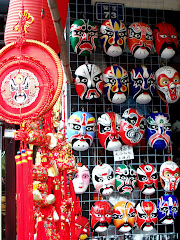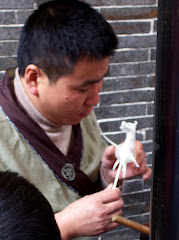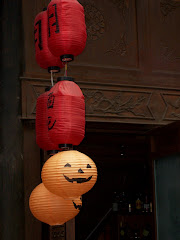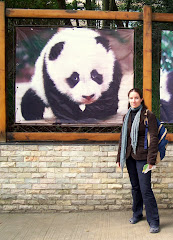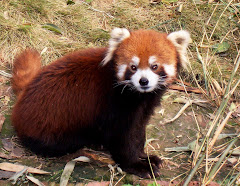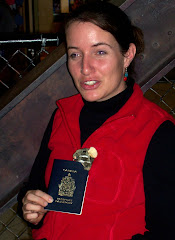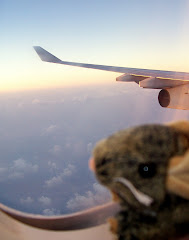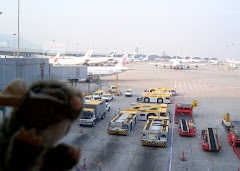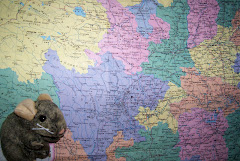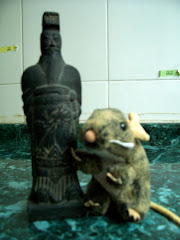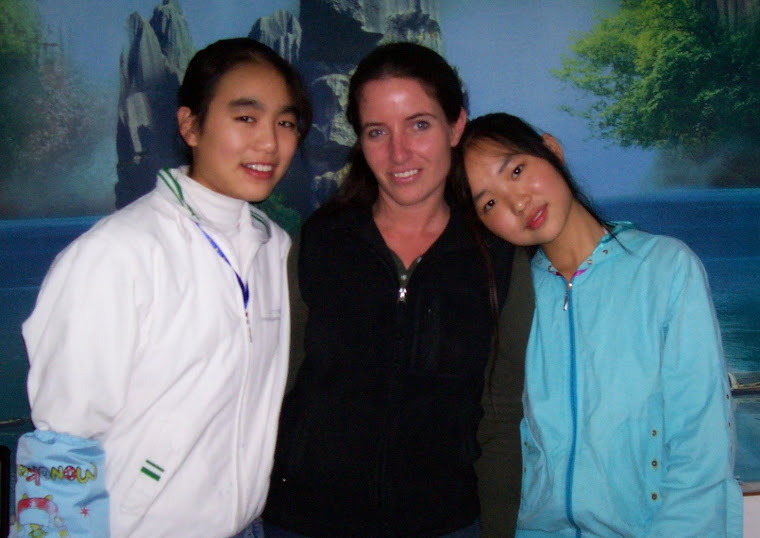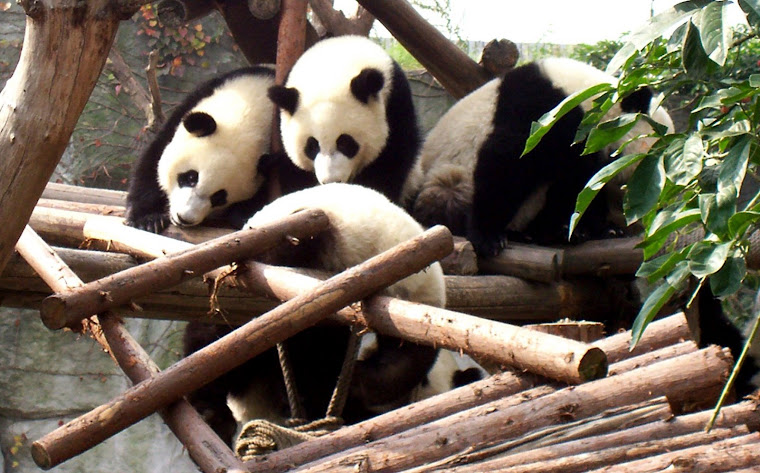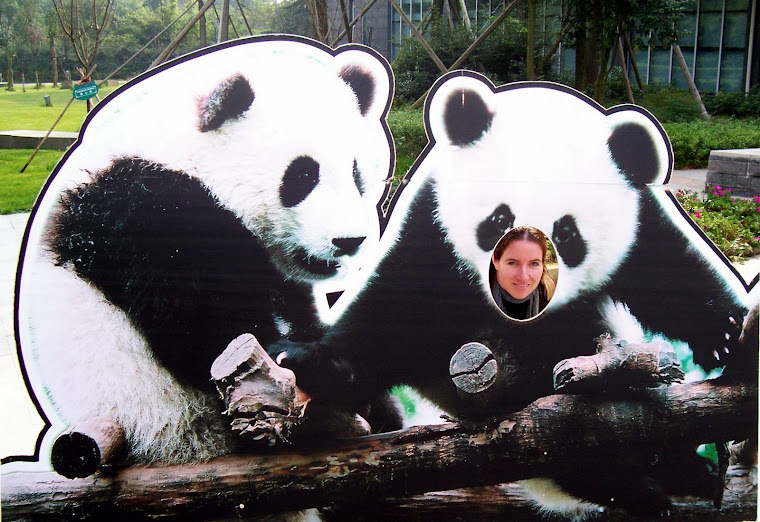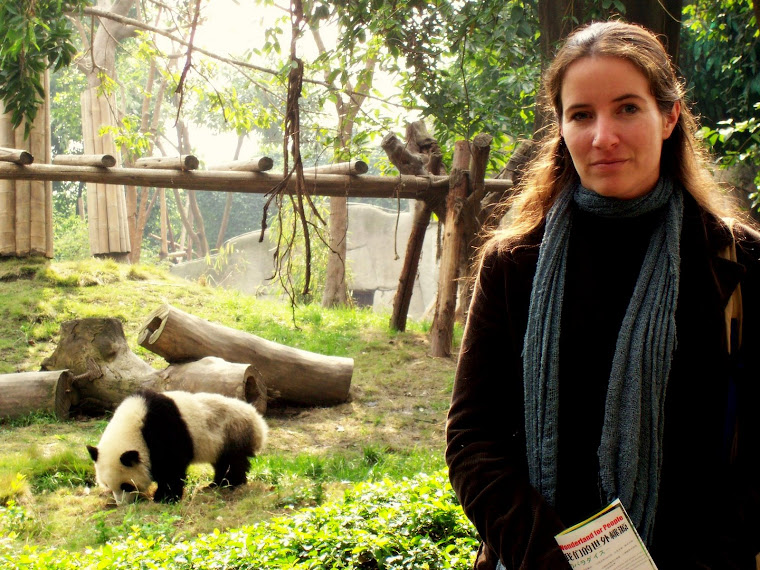The trip officially began as I took a 22 hour train south to Kunming from Chengdu, arriving on the 11th in Kunming. I had arranged to stay at a hostel called the “Hump” in the city center. Very backpacker-esque place, and sitting in the café chatting to other travelers made me wish I could go for longer than a 2 week trip. Kunming is a backpacker crossroads for people leaving overland from and arriving in China via the Laotian and Vietnamese border crossings, flying in and out of Thailand as I was doing, as well as for those travelling within China around the southern provinces. One always picks up lots of useful information in such places as to current visa requirements, exchange rates and good places to stay, visit and eat off the usual beaten track places mentioned in travel guides. Spent the night in the dorms, and wandered round the market for a while the next morning, before heading for the airport to catch my flight out. Kunming’s airport is small and easy to get round. I’d arrived the usual 2 hours before departure to check in, but found I could just as well as waited until half an hour before. The flight wasn’t full, despite the fact that it was going on to Bangkok after the stop in Chiang Mai. The majority of passengers appeared to be golfers, and a largish group of American college students doing a term of Asian studies.
The flight, on Thai airways was short and uneventful. As we descended over the Chiang Mai valley to land, it was difficult to see whether there was a city at all to land in! Unlike most cities from the air, masses of lights and black lines of roads crisscrossing the built up areas, Chiang Mai seemed to be just scattered patches of light and the occasional road wending through dark areas. This turned out to be because Chiang Mai is one of the greenest cities I’ve been in, with loads of trees, parks and gardens. Chiang Mai is another small airport, like Kunming, and seems to be more used for connecting flights, as we3 walked down the corridor towards customs and immigration, there were other corridors branching off with signs like “connection to Laos”, “connection to Hanoi”. Was at and through immigration in the space of about 5 minutes, getting a free 30 day visa upon arrival. Collected my pack, and strolled out into the arrival area, changed enough money to see me to the hostel, figuring I’d sort out better exchange rates the next day. I’d the name of a hostel to go to, recommended by Colin, so went up to the taxi booking station. Before I even got there, a friendly Thai woman approached, asking where I was wanting to go, and within moments had me loaded into her taxi, chatting away the whole time. Driving into the town, window rolled down to let the warm tropical air blow in, sucking on a coconut flavoured sweet she had proffered, I felt as though I’d entered another world. All the people I had met in my first half hour upon Thai soil were smiling and friendly, and I looked forward even more to the coming two weeks. Finally located the hostel in one of many back alleys full of hostels, restaurants, coffee shops and massage parlours. Checked myself in, threw my pack on the bed, and took off to explore for a few hours before bed. Wandering out of the alley onto a fairly busy thoroughfare, it seemed that the crowds were thronging vaguely in one direction. I let myself be carried along with the flow, and soon found myself in the midst of a huge market, full of stalls with handicrafts from all over the northern provinces of Thailand, run by members of various hill tribes, dressed in their traditional clothing and headgear. I always love markets, and this one as no exception, a riot of colour, textures and sound. There were stalls full of handwoven bedspreads, pillow cases and clothing, others displaying a shimmering selection of Thai silk, and yet more with tablefuls of silver and costume jewllery. One slightly more unusual vendor was crouched beside homemade shadow boxes displaying dried bats, displayed as one would normally see butterflies pinned. Half the market was food stalls, with delicious aromas of roasting meat wafting over the entire market area. I was hungry, and strolled past the vendors barbecuing skewers of spicy meat on sticks over coals, other grilling bananas or mixing smoothies of tropical fruit. More stalls had foods I’d never tried before, lengths of bamboo stuffed with sweetened sticky rice and raisins, packets made of banana leaves holding sweet potato custard mixed with coconut milk, lots of grilled fish, and huge blue shrimp waiting to be BBQed ...a veritable feast, for mere pennies. After sampling a few different things, fiery barbecued mutton sate, a grilled banana dripping with coconut sauce, and a banana leaf packet of sweet potato, I bought a bamboo filled with sticky rice, and headed back to the handicraft section, admiring, and getting an idea of the prices to compare with as I shopped the next few weeks. Finally headed back to the hostel, and fell blissfully asleep, enjoying the warmth, a bellyful of delicious food, and the prospect of 2 weeks of exploration ahead.
Rose early the next morning, planning my usual first day in a new city, walking and walking the first half of the day until I was thoroughly lost, then spend the second half figuring out how to get back. Reckon you see so much more when you just hit the streets and wander, and don’t necessarily follow a guidebook. Quite often I’ll check out a rough lay of the land the night before, so if there are some places I particularly want to see, I can at least start in their general direction. In the case of Chiang Mai, before I’d got more than a few hundred yards, I came across my first wat (temple). I’ve always loved visiting temples, and Chiang Mai provided enough of them to fulfil even the most temple-hungry tourist. I imagine there’s literally a hundred wats of various sizes and popularity in the town, and I decided to see as many of them as I could. Thai temples are architecturally quite dissimilar to the Tibetan ones. Tibetan temples and monasteries tend to be very solid, heavily built to withstand the weather and climate in Tibet’s high altitude. The Thai temples are much taller and more graceful, with high swooping roofs, tiled in orange or green. The decoration tends to be gold, with lots of fine detailed carving and often dragons spiraling up the stairways leading into the temple. As I’d set off so early, the monks were just getting ready to head out with their begging bowls to gather their day’s food. Dressed in saffron robes, one shoulder bare, and lower robe coming only midway down their calves, it was obvious that each branch of Buddhism had adapted the monastic garb to the climate their monks lived in. Their heads are shaved just as the Tibetan monks’ are, but also oddly enough, have their eyebrows shaven. (I never did manage to find out why.)
The course of my wanderings took me to at least 20 wats, but since I’d managed to come to Thailand without my camera (Spent a lot of time kicking myself for that, though it had the result that I spent more time taking notes, and paying attention to details so I could write it down for posterity. And thus inflict whoever reads this with yet another epic of epics…) In the afternoon, came across a huge market area, with an indoor section, like a shopping mall, except replacing the usual sterile chain stores that we know with shops full of ethnic clothes and handicrafts, jewellery, dried fruit and meat of all sorts, and others full of cheap plastic made-in-china kitsch. There were three floors connected with escalators that didn’t appear to have ever worked, and strolling around it was intriguing to see a shop selling gold right next to one selling dried chicken feet. Outside the sidewalks were taken over by stalls selling all sorts of goods, and intrepid pedestrians were forced to tiptoe their way through, and over the piles and racks of wares. More permanent shops sold a huge selection of multi coloured and multi textured fabrics. Here too were the inevitable roadside snack stalls, so the whole market area was redolent with the smells of frying meats, garlic, incense, sweat and flowers. Once I turned a corner and found myself in a flower market, and was hit by a veritable wall of scent: jasmine, hibiscus, marigold and other less readily identifiable flowers were strung on poles in a gorgeous array of sweet-smelling colour. A few lanes down were the basket weavers, agile hands and feet creating not only baskets, but also mats and the flattened-cone shaped hats that the local farmers still wear to protect them from the sun in the rice paddies. In many ways, the markets here are similar to India, in sights, smells and the crowds and jostling. However, I found the whole feeling much less intense, and more friendly. Noone seemed stressed at being caught in a crowd waiting to get through a narrow path past the vendors, and I didn’t feel as concerned about getting robbed as one usually does in the Indian markets. It was beginning to get dark as I eventually made my way out of the crowded market streets, and began to wander back in the direction of the hostel, checking out the potential for dinner on the way. Eventually decided on a vegetarian restaurant, and indulged myself in one of the most delicious meals I’ve had in a long time. Kraow Si, it was called, and was a sort of sweet-spicy coconut curry, with loads of mushrooms, tofu, soft and crunchy noodles and green vegetables. Marvellous!
Returned to my hostel full and happy for the second night running, flopped on the bed under the slowly rotating fan after a cool shower, and out of curiosity, turned on the TV to see what was on. After living in China, with its 9 government controlled channels, Thailand was a lovely surprise, with about 50 channels, several in English, on in French, and news channels from all over the world, CNN, BBC, Al Jazeera, as well as the Thai counterparts. Nice to have the choice if one wanted it.
CHIANG MAI to PAI
The next morning I was to catch a bus from Chiang Mai up into the northwestern highlands to Pai, the town where Colin and his wife Puangsoi are living. I caught a local bus rather than the posher and more expensive tourist version, and as usual, wedged myself into the narrow seat, after stowing by pack in the back of the bus on a large pile of baskets and sacks full of vegetables and the occasional chicken. Also, as is usual on the local buses, there’s not a millimeter of extra leg room, even for me, who makes no claim to great height! Also as per usual, the local Thais, like the Indians, seem to get terribly carsick, and spent much of the trip politely puking into plastic bags, unlike the Indians, who tend to lean over other passengers out the window. (Indian buses tend to arrive places streaked with vomit on the outside). Despite all that though, the countryside was beautiful and distracting enough that the puking and leg cramps didn’t bother me overly much. As we left the outskirts of town, we began to climb into the wooded hill, rising to about 2500 ft above sea level. The road snaked though the hills, with sheer drops on one side, and jungle-covered hillsides on the other. Periodically we slowed through small villages, with traditional Thai homes made of teak built on stilts. I wondered about that, having imagined that stilt houses tended to be built more for fishing communities in swampy or ocean areas. However, I asked later about this, and was told that families used the areas beneath the house to keep their cattle, and also as a cool place to gather or rest during the heat of the day. After that I realized that many of the stilt homes had hammocks strung beneath them, a logical way to keep cool during the hot summers. Quite often there would be small wooden shacks along the roadsides, with local farmers squatting beside piles of odd looking vegetables or fruit, and even sometimes colourful displays of various kinds of orchids. Often one could see the glittering peaked roof of a wat set in among the trees behind the village, and frequently we came across monks in saffron striding down the roads wielding yellow umbrellas to protect them from the suns rays.
Much of the way to Pai seemed to be through uninhabited jungle, and Colin told me later that much of the area is still kept as nature reserves, full of wild animals and birds, and preserving some of the remaining original teak forests. I had a lot of time to enjoy the scenery as the driver was probably the slowest of any Asian bus driver I’ve ever had the pleasure of being driven by. I suppose he was considering his safety as well as that of his passengers, but I was suspecting we were going to die of old age before arriving. I could understand the necessity of having to drive slowly up hills, but he seemed to use the brakes to inch round bends on the way down as well. At some points, I was quite sure a cycle would have been faster. However, we did eventually arrive in Pai 4 hours later, and just a short time later I was sitting with Colin and Puangsoi in the cool stilt area under their beautiful teak home on the outskirts of Pai. Pai is a small town nestled in a valley astride a river, about 20km long, edged by wooded hills. But more about Pai later, as I did very little exploration for the next day or so, instead spending the time with Colin ad Puangsoi and her family chatting,catching up on news, drinking REAL coffee and enjoying Puangsoi’s glorious cooking. The next evening, we went for dinner to a Thai “fondue” BBQ restaurant. There is a buffet of various plates of raw meats which one can choose from, and then take back to one’s table where the waiter will have brought a smoking upturned metal sieve, placed over hot coals. Around the edge of the upside down sieve is a shallow dish. You first melt a lump of fat at the top and then stick pieces of raw meat all over the hot metal. It sizzles and fries, and the juices run down into the dish. Water is added to this, as well as some chopped green vegetables, and voila! Soup!
It was an all you can eat affair, 65 baht each(which works out to just over 2$). After dinner, we went out to Punagsoi’s home village, just outside Pai town, for a lantern festival to be held in the temple there. We drove down a dark winding lane, which was suddenly lit into brilliance by burning torches stuck in the dirt at intervals along the roadside, made of bundles of dry sticks and bamboo soaked in a sweet smelling resin.
Arriving at the temple, also lit up with torches and decorated with streamers and tinsel, we were just in time to watch the local children helping a monk set the candlelit lanterns afloat. They were about 2 feet high, and a foot in diameter, made of thin, transparent white tissue paper stretched on a light frame of split bamboo, which was then carefully held over a flaming torch until the captured heat was strong enough to lift the lantern up, floating it off gleaming into the night sky. I stood and watched this for some time, until I was distracted by loud singing in the distance. Went out with Colin and Punagsoi to watch the first of three “logs” (really hundreds of sticks and bamboo poles boud tightly together) which had also been decorated with tinsel and colourful streamers, carried by about 8 men, accompanied by the villagers dancing and singing to the rythym of drums, cymbals and gongs. The log was carried once round the temple, still accompanied by the dancers then brought to the temple steps, where everyone knelt down, was prayed over (blessed?) by the senior monk, then carried the log to one of the temple compound gates, upended into a hole in the ground, and then the top end set alight. Some of the dancers joined the crowd milling around the temple, the rest vanished, only to reappear soon after with the second and then the third of the logs. Same performance as the first, though the dancers, singers, musicians and audience were all growing slightly the worse for drinking, and some of the dancers were reduced to more of a stagger, which however, didn’t seem to affect the appreciation of the watching crowd in the least. After the third log, the villagers that were left seemed ready to settle down to some serious drinking, so we left, though just as I was going through the gate, a little old guy came running after me, and thrust a piece of bamboo in my hands, before returning to the dance. It turned out to be full of a sweet red bean paste and dried fruits, though initially I wasn’t sure if I was supposed to burn it, offer it in the temple or eat it!
BACK TO CHIANG MAI
The next day, we loaded ourselves, as well as Puangsoi’s son Tor and their dog Popcorn into the Mitsubishi pickup truck, and set off back to Chiang Mai. We were to spend the night in Colin and Puangsoi’s home on the outskirts of Chiang Mai, as we had to catch the bus for the first day of our 5-day tour down to the southeast coast of Thailand near the border of Cambodia the next day. Fairly relaxing day. Trailed around after Colin and Puangsoi as they did some errands, had dinner in, then piled into a song-thaew (Thai shared taxis- small pickups with seats in the back) to catch the tour bus from the Arcade bus station.
TRIP TO THE SOUTHEAST COAST
Colin and Puangsoi had been on tours with the same group of people several times. They were a group of about 40 elderly-ish people, mostly retired schoolteachers, a few had brought their young grandchildren with them. The bus itself was a double-decker affair, its sides painted with murals of cranes, flowers and waterfalls in gaudy colours. We picked numbers as to where we would sit on the bus, and I was paired for the trip with a lovely woman called Pha Air. She was a retired English teacher, who now spends her time teaching foreigners to speak Thai. Got settled in, and set off on the long 24 hour drive to the southeast, stopping periodically for toilet breaks and meals. One nice thing about the bus rides in Thailand is that there is no smoking allowed on the bus, and another thing, that I didn’t notice at first, but then realized to my surprise, is that unlike most of the rest of Asia, at least India, Nepal, Tibet and China, is that the drivers DON’T use their horns unless they absolutely have to. Lovely. The downside of the bus ride turned out to be something that drives many people travelling in India mad as well: the movies played at top volume. Unlike India however, where the movies tend to be Bollywood flicks with lots of singing and dancing and a minimum of actual plot, the movie we were subjected to was about (as much as I could discern considering it was in Thai) a guesthouse run by obese Thai transvestites who wore outlandish wigs and garish makeup. At some point, a girl guest was raped/killed by some male guests, and the transvestites helped bury the body, (I assume to protect the good reputation of the house?!) As a result the girl turns into a zombie and haunts the hotel. A bit further along, another girl gets killed, I didn’t really make out how or why, and also becomes a zombie. So these two zombies in greenish makeup and black ringed eyes appear through walls and generally cause havoc. It was all very odd, and I never worked out whether the situation was actually resolved. Eventually gave up trying, and got a bit of sleep. As much as one can on a bus, albeit one with seats that cranked back.
COAST OF SOUTHEAST THAILAND
We finally arrived at the coast mid morning the next day, the driver skillfully navigating the big awkward bus through the backroads that looked as though they’d been designed for scooters. We pulled into a resort surrounded by palm groves and banana trees, and hauled our weary, cramped bodies off the bus to unload our luggage. We were sorted into rooms, which turned out to be individual wooden huts just off the beach. “Hut” perhaps doesn’t create the best image however, as they were beautiful little buildings on stilts, with teak floors and walls, and thatched roofs. The bathroom opened out the back, and was a semi-circular stone wall attached to the back of the hut, open to the sky, and full of potted palms and orchids. The shower head protruded from a crevice in the rock, and a large frog gazed at me impassively from a damp, moss-lined niche. We were told we had a couple hours to relax before lunch, and while most of the others went to take naps, I donned swimsuit and headed straight for the beach. It was so very nice to be back in the ocean, it’d been far too long. Spent the next three hours in the water, only surfacing for lunch, which turned out to be a glorious buffet of seafood. In the afternoon, we had the choice of staying at the beach, or getting on the bus for a trip to the town of Chantaburi.
I never take organized tours, since I usually prefer to do my own thing at my own speed, but I’d been invited along on this one by Colin and Puangsoi, so decided to give it a try. So I piled on the bus after the others, (hoping desperately the TV system had broken down, which was emphatically not the case, unfortunately) and we headed off in air conditioned splendour the 50 km to Chantaburi. It’s not much of a town aesthetically, though the fishing boats on the muddy brown river were painted bright colours like turquoise and emerald green, and the river itself was edged in palms and hibiscus. This town is renowned for its gem trade, and it turned out that the trip in was to allow us to shop for jewellery and gems. Figured I’d give that a miss, gems not being either in my budget or interest. Decided instead to wander off in search of a temple called Wat Phrai that I’d seen signs for on the way into town. Found it easily enough, and spent some time wandering around the enclosure before entering the main building. Inside the temple was one of the most beautiful reclining Buddhas I’d eve seen, well over 20ft long, it had a lovely serene face, and was surrounded by various sizes and shapes of boddisattvas. These were originally black, but the visiting pilgrims had applied bits of gold leaf, so they looked slightly leprous, with bits of the thin foil overlapping or dropping off. The surface of the main altar was covered with guttering candles. Looking up, the beams of the roof soared high, and the walls were covered in painted murals depicting the life of the Buddha. The few monks looked astounded to see me, as though I’d dropped out of space, as Chantaburi isn’t exactly a highlight of most backpackers travel itineraries. That’s what made it nice about being with a Thai group, I came to realize a day or two into the tour, we went to places the Thais go, not where all the tourists gather. Returned to the bus, stopping to buy fresh fruit juice poured over crushed ice on the way. The next stop on our itinerary was at “Sea World”. Not somewhere I’d have made a conscious effort to visit on my own incentive, but the Thais were very excited, since they all came from the northwestern hill areas of Thailand, and the prospect of a dolphin show caused them to leap off the bus upon arrival with great enthusiasm. We strolled through the park (full of stalls still trying to sell gems of somewhat dubious worth), and gazed into large, slightly scummy aquariums full of unhappy looking captive fish. (If fish could display any feeling, unhappiness would have been it. Captive wild animals aren’t my favourite thing, and some of the fish were far too large for the size of tank they were being kept in.)
The park itself had quite attractive gardens, lots of bougainvillea in full bloom, a variety of hibiscus, and of course orchids everywhere. We finally arrived at the dolphin tanks, and walked round the large pool, sectioned off into four areas with a young Thai lad sitting on a floating mat in each one. As soon as a group of tourists had accumulated, they would make signals to the snub-nosed dolphins bobbing and diving in the water, and put on a show which involved the usual athletic leaps, fin-flapping, tail slapping and chattering. The obvious intelligence of the animals is always impressive though I still thought they’d have been much happier in the wild where they could swim free. About an hour later, we were all herded to the main area, where there was a slightly battered stage area, with a garishly painted backdrop of florid palm trees and a neon-coloured sunset on a very artificial looking beach. The loudspeakers blasted out a tinny rendition of Thai pop music, interrupted at intervals by a very loud and nasal female Thai voice informing us what was to be next in the program. But the accompanying static made any deciphering of what she was saying virtually impossible, so we tried to ignore it (Kind of like trying to ignore the bombs in a war zone, just hoping they’ll go away.) There were pink bottle nosed dolphins as well as the snub nosed variety, and the whole show was run by two young Thai lads in wetsuits who looked as though they had done it a million times before.
Stopped at a restaurant on the beach for dinner, more seafood, octopus, prawns and spicy noodles, then back to the resort in time to watch the last of the sunset reflected scarlet on the waves. The temptation to go for another swim was too great to resist, and I headed back out into the water, night swimming being one of my favourite things to do if there’s swimmable water anywhere within reach!
Next morning, up with the dawn, in time for another swim (packing as much swim-time into this holiday before I return to school) before breakfast, then loaded our stuff back into the bus to continue the journey, first stop being at Kung Krabean Bay nature preserve, a mangrove forest through which walkways on stilts allowed us to explore the interior of the forest, and see the odd way the trees seemed to have been planted upside down, armlike roots branching off the main trunks down into the black swampy mud. All the trees were labeled in Latin and Thai, which, though fairly meaningless to me as a layman, nevertheless impressed me with the variety of trees that had adapted to the conditions required to survive in salty swamp areas. The mud was crawling with crabs, black and virtually indistinguishable from the mud they lived in except for the occasional flash of startlingly bright red claws. What genetic evolution caused that I’ve no idea.
Then back in the bus, and on the road again en route to Trat, the last largish town before the Cambodian border. Along the way, I stared out the window, (trying hard to pretend the Thai karaoke wasn’t happening-the only musical qualities the guy singing could truthfully claim were persistence and volume) enthralled by the scenery along the coastal road. The dense jungle covered hills dropped with astonishing abruptness into the sea, and we passed tiny fishing villages, perched precariously on their stilts in turquoise lagoons, the boats moored for the day, bobbing alongside fragile looking wooden jetties.
The blue mesh fishnets were strung out to dry on wooden racks, alongside woven bamboo mats covered in shrimp drying in the sun. Being camera-less, I’ve been trying to take lots of notes to keep at least a mental picture of what I was seeing, and with any luck pass some of it on to those of you who manage to persevere through reading all this! Stopped briefly at one village for a leg stretch, and I wandered off immediately into the village, watching the dragon flies flitting around, darting specks of turquoise, red and green. Overfed cats lolled in the sun beside the drying nets, licking their paws in almost tangible satisfaction with life and its inexhaustible supply of fish! Some of the children came out, gazing shyly up at us with liquid brown eyes. I bent down to draw pictures for them in the dust, at which point their faces broke into huge happy grins, and a crowd gathered fairly quickly. Back onto the bus.
Since the average age of the group I was travelling with was about 55, I was quickly adopted as the tour mascot, and they smiled with amusement at my odd foibles of swimming at strange times and being more interested in fishnets than rubies or sapphires.
I was given the name Lha, which in Thai means “youngest daughter of the family”. Fairly apt for the situation I was in.
More karaoke. At this point I was willing to pay someone to sabotage the microphone.
KOH KOOD ISLAND
We passed through the town of Trat, which was a fairly nondescript little town, and headed for a coastal inlet, where there was a dock full of boats waiting to take passengers to the islands. Here too the boats were brightly painted, the one we boarded was a lovely shade of baby blue with yellow trim. The bow was high, and decorated with a bunch of palm leaves and flowers, as well as incense and some printed prayers. An offering to the sea gods, I’d imagine. There were rows of seats on deck, and upstairs as well, under an awning, but I went to sit up on the bow, basking in the warmth of the sun, much to the consternation of the Thai women, who were forever warning me against my skin darkening (as in most Asian countries, people prize fair skin over dark). We set off along a river tributary towards the sea, through watery passages, bays and inlets created by stands of mangrove trees. The Thais burst into song (happily, karaoke machine-less) and accompanied themselves with giggles and clapping and eventually, as the whiskey bottles drained, with dancing.
Lunch was prepacked, brought with us from the resort, sticky rice, and a seafood stirfry – more octopus and prawns. The trip took about 4 hours, and it was lovely to sit in the sun on the bow, rising and falling gently with the waves, watching schools of flying fish go skimming across the surface of the waves. The water was a clear deep blue, shading to turquoise and sapphire near the islands and their reefs. As we neared Koh Kood Island, we stopped to go snorkeling, the “captain”, youth about 20 years old, sent one of the mates, a thin brown lad with sparkling dark eyes and dark hair flopping over his forehead, diving off the bow into the clear water to moor us to a large rock just off a small outcrop of rock. I’ve pretty much been living with my swimsuit on under my clothes, in a state of readiness for any possibility of a swim, and I was straight in, diving off the bow myself, away from the ladder where the Thais, lifejacketed and equipped with snokelling gear (none of them can actually swim) were congregated to inch their way carefully down into the water, squealing as they bobbed on the surface, while the less braver of them watched with cameras at the ready from the deck. I swam round the other side, hearing Colin splash in shortly behind me (all Australians can swim, I think it’s genetic). Someone tossed me down a mask and snorkel, and I swam off in the opposite direction of all the noisily splashing Thais, who’d perhaps not yet realized that they weren’t going to see much if they scared all the fish away! It was quite pretty, not as colourful or diverse as the Red Sea where I worked on a liveaboard dive ship for a year, but lots of brain and staghorn coral, whole forests of sea urchins, their black spikes causing me to head cautiously out of the shallows (being stuck once was enough, still have the broken off bit in my finger from years ago!). Schools of needlefish, and lots of small flashy fish darting and shimmering within touching distance, fearless and possibly as interested in me as I was in them. Saw a couple big sea cucumbers as well, but too near to the sea urchins to risk going for a closer look. Swam languidly back round the corner of the rocks, enjoying the warmth of the water, the fish, and the peaceful, crackling sound of fish eating, until the Thais came splashing up. Dove under and past them, and headed round the other side, swimming round for a bit more, til I realized that I was the only one left in the water. Came up to see the Thais being herded back onto the ship, the crew swimming around, pulling them over by their lifejackets. Swam over, treading water til I could climb on after them, and was greeted by shouts of Lha-Geng, which means “well-done!” Apparently they were impressed by my swimming.
Once we were all loaded back on the ship, steamed off again towards the island, arriving late in the afternoon, the sun just starting to turn the waves red. As we got into the shallows, near the long jetty, the water turned from turquoise to sapphire, and you could see clear down to the white sand at the bottom. As we neared the jetty, a rainbow appeared, arching down from the sky and touching the jetty. Very auspicious! We were met by a flotilla of song thaews, the open backed pickup-truck taxis with seats in the backs, and carted off to the resort we were staying in that night. Arrived in time for a magnificent sunset on the beach, (reminiscent of Max Ehrmann) and were sorted out in pairs to chalet style huts on the hillside overlooking the beach. I was allotted to a room shared with Pha Air, my seatmate on the bus, as her English was really good. We dumped our stuff in the room, and most people headed back down to the beach to watch the last of the sunset. Back up to the dining hall for the biggest seafood feast yet, with yet more prawns, fish fried in sugar and butter, banana leaf packets stuffed with a spicy fish terrine, hot and sour soup served in steaming tureens resting on silver charcoal burners, and the piece de resistance, huge boiled crabs, bigger than my hand. After the feast, I returned to the beach, sitting on the still-warm sand in the dark, listening to the sound of the waves on the shore, and watching the pinpricks of light dotting the horizon as the fishing boats headed out to sea for the night. Went for another night swim before heading happily to bed.
Early the next morning, I borrowed Puangsoi’s camera and wandered off along the shoreline to a small fishing village, where the boats were just arriving from the night’s fishing. Strolled through the town along a precarious walkway of wooden slats on stilts, enjoying the colours of the houses and boats, the kids fishing in the lagoon, and then clambered out farther along the shore on the rocks, to take photos of a stranded wooden sampan on the beach and a pile of drying crab-nets.
Back to the resort to catch song thaews into the island interior to visit a fishing village and a waterfall. Inland, the island is virtually untouched jungle, lush and dense, we drove along winding tracks listening to the birdcalls and the sound of monkeys chattering. First stop was the village, larger than the one I visited earlier in the morning, with rickety wooden walkways and the usual houses on stilts, colourful ships moored alongside, and the fisherman sleeping soundly in hammocks, as the women chopped up fish to dry in the sun, baskets of writhing crabs suspended in water to keep them fresh. There was a shop of sorts as well, selling everything sea related, from seashells to dried squid, and the Thais spent most of their time there, purchasing huge amounts of various flavours of dried sea creatures. I walked down along the jetties, as far as I could go, and met a small child who came put to meet me clutching a beautiful shell, which she handed me, smiling shyly, before running off, sure-footed along the precarious planks. Headed back towards the road, past the racks of drying fish, the smell of seafood pervasive in the air, and rejoined the rest of the group as we clambered back into the song thaews to go to Khlong Chiao waterfall.
We reached the waterfall after a long drive through the jungle, with its soaring palms, stands of graceful bamboo, dense green undergrowth – a riot of greens - and past plantations of rubber trees, with the diagonal slashes in the bark and the small black bowls attached to the trunks, similar to maple syrup gathering. The track narrowed and grew rutted and full of potholes, a result of the wicked monsoon-type rainstorm the night before, and the song thaews eventually stopped to let us walk the rest of the way. I still had the camera, and set off along the track ahead of the group, wanting to enjoy the “quiet” of the jungle on my own. But as I got deeper along the track into the forest, I realized that the jungle was far from being quiet. There was a multitude of birdsong, and you could hear monkeys chattering and crashing through the trees, though I didn’t actually see any. Lots of butterflies, banyan trees, and other trees covered with creeper vines. The tree cover overhead was so dense that the light was emerald green, filtered down through the leaves. The waterfall itself was a dull roar that grew louder as I neared the rock-filled river. The path branched off in two area, and I took the one that led down to the riverbed, which resulted in having to clamber over huge black rocks, pull myself over banyan-like tree roots, until finally I hauled myself up one huge rock and found myself at the foot of the waterfall, overlooking a large green-blue pool of clear water, which splashed away downriver, frothing white over the black rocks downstream. Of course this was all the invitation I needed to swim, so straight in I went, and was already splashing happily about before the rest of the group caught up. It was all a bit like those shampoo ads, you know the ones where the girl swims in a pool in front of a waterfall, tossing back her hair in spray of glittering water droplets? A few of the others waded into the shallows at one side of the pool fringed with jungles, vines trailing in the water , and everyone sat in silence, in awe of the sheer natural beauty of the spot. I swam up under the falls, and crawled up the black rocks behind, peering out at the world through the veil of falling water, before diving out through it back into the pool. Back to the trucks, and back to the resort for another lunch-feast. This time we had fried chicken along with the seafood and noodles instead of rice, but still the inevitable huge dish of stir-fried octopus crab and shrimp.
Back to the mainland on the same ship we came in on, cruising leisurely past the other islands on the way back, with their stunning turquoise bays and emerald lagoons. All the islands were covered in mangrove forest and jungle, with every once in a while, a startlingly white strip of sandy beach. Sat on my usual spot on the bow on the way back, gazing down into the water, rising and falling with the waves, and watching the water change colour from sapphire to turquoise to indigo as we headed out into open water, the surface sparkling with diamond-like glints of light as the sun sparkled on the crests of the waves. Passed several large jellyfish, at least a foot in diameter, as they floated, billowing pink and trailing tentacles just below the surface.
BACK ON THE MAINLAND - CAMBODIA STOP
Our driver got lost on the way to the place we were supposed to stay that night, so we stopped to ask directions and stretch our legs while he readjusted his navigation. By the time we arrived, it was late, so we just dumped our stuff, and walked down to a restaurant for dinner. This was the now usual spread of seafood, followed by platefuls of fresh tropical fruit. The restaurant owner came to eat (and drink!) with us, and had arranged for a couple of local lads to run a karaoke machine for us. Of course the Thais were in heaven at this, and the evening turned into a night of singing, dancing and drinking. Lots of Thai beer and brandy. I was also on the brandy, but I don’t know how much actual alcohol was in it, as it didn’t seem to have any effect. This carried on until around midnight, and though I steadily resisted any attempt to get me to sing or dance, I quite enjoyed watching all the retired teachers be-bopping round, and crooning Thai songs at the top of their lungs! Finally packed up the karaoke at around 12:30, and walked back to the rooms. I went for my usual night swim, much to the alarm of the others, who said swimming at night was dangerous, and insisted on posting a “guard” (a waiter from the restaurant) to make sure I didn’t drown, as the beach was supposedly deeper here. No worries though, I went for a quick dip, let him walk me back to the rooms, and then waited til he’d gone before going back for a proper swim! All a bit like being a teenager again!
Next morning we were to visit a town across the border of Cambodia. Had a quick breakfast, (no time for another swim, unfortunately!) and climbed back on the bus to drive to Khlong Lai, the small town on the Thai side of the border. There had been some question of whether we’d actually be permitted to make this stop, as just before leaving, tension had sprung up between the Thais and Cambodians over the ownership of some temple. There had been military involved and some shooting and bloodshed, but we saw nothing of it, and were allowed to cross over for our few hours of Cambodian exploration.
(Ironically, and fairly typically, many of my friends would say, this trip has turned out like many others for me. When I booked my flight to Thailand, riots had just broken out in Bangkok over yet another political crisis. Then the Cambodian thing just before we arrived, and then when I headed back northwest to the hill areas, intending to explore the area near the Burmese border, unrest developed there as well! Bit of a trend maybe? In the year I’ve been living in Sichuan, there has been a big snowstorm which killed lots of people in China, the Tibetan uprisings, the huge earthquake….Maybe people could pay me to stay away? Or pay me to go to place where they don’t like people? At any rate, the disasters always seem to happen near, but not actually affect me, so it’s a bit like being the eye of a hurricane!)
We were let down in the Thai town first, to do some shopping in the sprawling market area, which sold everything from odd tropical fruits to fake electrical goods and jewelry. There were also stalls selling “antiques” and handicrafts, dried fruits and all kinds of snacks. After an hour or so, we got back on the bus to cross the border, passing a no-man’s land area, a cleared area, with only the tangles of barbed wire and the paired Thai and Cambodian flags to show that it was a border crossing. At the Cambodian town, the Thais got out to shop at the duty free, and check out the casino (which they had never seen before, casinos being illegal in Thailand). I’d no interest in either of these options, and wandered off instead to check out a temple-shrine I’d seen the spires of on a hilltop overlooking the town. There was a small shrine and spirit house at the foot of the hill, and inside the shrine was an eclectic collection of stone and wood phalluses. In honour of a fertility god perhaps? Reached the top of the hill, walked about for a while, and took a couple photos of the Cambodian valley and countryside, before returning to join the group before they took off and left me in Cambodia. Then back in the bus for the long drive back to Chiang Mai, stopping en route for pee breaks, meals, and once at an OTOP shop, (One Tambon (village district) One Product). These are projects run by the Thai government to encourage villagers to continue and develop their handicraft and farming industry.
Karaoke on the way back the worst yet…monopolized by the guy who couldn’t sing, and it went on til the wee hours….by midnight was contemplating murder or worse, destruction of the entire sound system on the bus.
BACK TO CHIANG MAI, ON TO MAE HONG SON
We arrived back in Chiang Mai around 7am, and I grabbed my pack and dashed off pretty much immediately to try and catch an early bus up to Mae Hong Son, the last biggish town in the northwest near the Burmese border. I got a ticket, got straight on the bus, and off we went. I expected it to be the same road up via Pai, which was the shorter route, hadn’t occurred to me to check or ask, but it turned out to be the route looping west then back up north via Mae Sariang and Khun Yuam instead. It was a much longer trip, about 9 hours, but I was actually quite happy to be doing that route, as at least I’d get to see more and different scenery instead of following the same road I’d already taken twice. The bus was full of monks, and I was bemused to see that they went out for smoke breaks when we stopped! Many monks are covered with tattoos as well, as getting tattooed seems to be a fairly typical part of Thai culture. The road wended its way through more jungle covered hills, and I stared out the window enthralled by the landscape. Orchids grew wild on the roadsides. There were huge poinsettia trees, in full bloom, and every now and then as we rounded yet another S-bend, we’d get a glimpse of a hilltop temple or huge gold statue of Buddha. Villages perched on hillsides, often surrounded by terraced rice paddies, a brilliant bright green against the backdrop of myriads of darker greens of the jungle foliage. The driver this time round was much more typically Asian, speeding around blind corners with abandon, though still without the ceaseless blaring of the horn. The bus would frequently screech to a halt apparently without warning or cause, and a bunch of hill tribals would emerge from the jungle, hauling huge bags of vegetables or chickens, even the occasional duck. They also tended to wear the big woven hats, which made sitting beside them an exercise in trying not to have one’s teeth knocked out when they turned their heads. Another thing about travel in Thailand that so far I’ve not mentioned is the obsession with the royal family. Everywhere you go are flags, the red whit and blue stripes of the national flag, but also the turquoise blue of the king’s and the bright yellow of the queen’s flags. Not only that, but everywhere throughout the country are pictures of the king and queen, ranging in size from the small ones in every shop and restaurant to the huge ones by the roadsides.
The king and queen are well-beloved, despite being the richest monarchs in the world. They have initiated and controlled many projects around the country, and have lived very devout and charitable lifestyles, from what I was told. However, the king is now 82, and the crown prince is rather less in favour. He’s apparently been involved in several drugs and sex scandals, and I was told that he even set up a toll booth on one of the busiest roads in Thailand, between Bangkok and Pattaya, and the proceeds went into his own pocket. One of the princesses is in much higher favour, but there’s no precendent for a princess to be chosen as ruler when there’s a crown prince alive.
MAE HONG SON
Arrived in Mae Hong Son, and managed to negotiate myself successfully out of the bus station, which is situated inconveniently far from the town center. Got myself checked into a small hostel, and as usual dumped my stuff and headed out to explore. Mae Hong Son is a really small town, surrounded by forested mountains, and with a small ornamental lake called Nong Jong Kham in the middle of the town. On the edge of the lake are two temple complexes, Wat Jong Kham, which is about 200 years old, and Wat Jong Klang alongside, with its small museum of clay figures and old texts, along with other antiquities and oddities. Both have areas, usually the main shrine area, where women are not permitted to go. You can walk everywhere easily. There seemed to be an awful lot of bustle and activity for a small town, and it turned out that there was a festival to be held that evening. This was the same, I think, as the festival we saw in Pai at Puangsoi’s village, a celebration to end the Buddhist lent, because there were also the decorated logs and procession of dancers and singers. However, it was on a much bigger scale than the simple village ceremony, as there was a parade through the streets of town, with the townspeople dressed up in their best, many holding paper lotuses lit up with candles. There were also many “floats”, towering structures of paper, tinsel and other ornaments, carried on wooden biers, or transported on carts. The funny thing was that there had to be men alongside each float to halt the procession and lift the low-hanging telephone and electricity wires with long bamboo poles so the floats could pass safely beneath. It crossed my mind that this procession quite probably occurred every year, and that there was probably a way to figure out a height that wouldn’t necessitate having to stop the whole procession each time the floats got stuck. But it’s Asia, and whereas a western crowd would be stamping in impatience, the Thais just took the opportunity at each halt to step up the dances! There were different groups of dancers, one a group of very beautiful young girls who performed slow and graceful steps accompanied by flowing hand gestures. They were dressed in jewel-toned sarongs, and had their long hair tied back in large buns. Others were less stately, groups of guys who’d obviously been partaking of liquid refreshment beforehand as fortification, and they were performing more impromptu dances a lot like the dances in India, to the accompaniment of drums, cymbals, flutes and gongs. There were also “goat” dancers, similar to the Tibetan yak or snow lion dance, with two guys inside the hairy suit, but with the head of what I’m guessing was a goat. They were very athletic, prancing and rolling, entertaining and half-frightening the kids in the audience. Some of these were “led” by ancient women from the hill tribes, dressed in full regalia, with long heavy earrings, and colourful sarongs. One “goat” had obviously come from a poorer area, since it’s costume wasn’t made of synthetic material, like most of the others, but out of palm fronds! However, the guys inside made up for their exterior appearance by being the best dancers of all the goats.
The parade proceeded in fits and starts (wire-lifting halts determining the speed) to the wats by the lake, where the logs were set alight, and the crowds of Thias pushed their way into the temples for blessings. I edged myself out of the crowds, and made my way over to the night market beside the temple, where a mouth-watering array of snacks was laid out, and the smell of BBQed meat filled the air. There were tablefuls of sate chicken, pork, spicy fried or grilled fish, kebabs of various sorts, simmering vats of curry and noodles, as well as stalls selling fresh fruit and juices. Bought a whole bagful of various goodies, and took it down to the lakeside to eat, watching the crowds, as the parade had still not all reached the temple. The reflection of the lit-up temples shimmered in the lake, and after I’d finished my bag of food, with the help of a few stray dogs that sat imploringly at my feet, I wandered around the streets, checking out all the handicrafts laid out on woven reed mats. Virtually all of it was made and sold by the Karen and Hmong hill tribes, and ranged from woven bedspreads, mats, bags and cushion covers, wood carvings – mostly of elephants and buddhas, jewelry and clothing, and even musical instruments and Hmong Barbie doll clothes! It was still fairly early by this time, about 8pm, and I decided that since I was only going to have one full day in Mae Hong Son, and there was a lot I wanted to see up in the hills, I would sign up for a tour. This turned out to be much easier said than done, as there were very few tourists, so though many tours were advertised, very few were actually happening. Finally I found one place open, with a very friendly woman manning the desk. It turned out to only have been open for a few months, and she was more than happy to arrange a tour for me, even if I was the only one going. Her husband was the tour guide, and while she waited for him to return her call, she invited me to share dinner with her, a feast of curried meat and vegetables, along with deep-fried buffalo skin crisps and rice, followed by fresh papaya and hill tribe coffee. Finally it was all arranged, and I was told to turn up at 8 am the following morning. Went back to the hostel to crash as it’d been a long day, or days rather, since I’d been on the bus for about 28 hours from the border of Cambodia in the southeast, and was now up at the border of Burma in the northwest! Figured a good night’s sleep would be a useful thing before the tour tomorrow. However, en route to the hotel, met a couple ex-pats, who invited me for a drink in the local (and only) ex-pat pub. Spent the next three hours swapping travel stories and discussing Asian politics…
THE NORTHWESTERN HILLS AND TRIBES OF THAILAND
First stop on the tour was at the so-called “long neck” village. The village is right on the Burmese-Thai border, we walked past the border guards, in fact. I don’t know much about the politics of the Karen refugees, what they are refugees from, or for how long, but the Thai government seems to have welcomed them with open arms, and for better or worse, made use of them and their culture as a tourist attraction. Despite my interest in seeing the culture, unique as it is, I did have some qualms about the people being exploited. However, Tanakorn, my guide told me quite practically that their previous way of survival had been growing poppies to sell to Burmese opium lords. Though there are doubtless pros and cons to the life they lead as a virtual “tourist village”, at last they are definitely encouraged to maintain their culture and language. It’s the women of the tribe that are renowned worldwide, for their elongated necks. From the age of 5, girls (can choose to) begin wearing a few heavy brass rings. These are added to over the years, until the final spiral of rings weighs a couple kilos. In fact, their necks haven’t been elongated at all, rather, the weight of the rings pushes down on their collar bone and ribs, until their necks are given the appearance of being stretched. Either way, it looks seriously uncomfortable, and I couldn’t imagine how hard it’d be to sleep or, for that matter, get up in the morning! The village was actually made up of three separate tribes of Karen, the long-necks, the long-ears, and the black clothes! The first part of the village was made up of the long-necked women, mostly going about their work of weaving. Each of them had a stall full of woven scarves, shawls and bedcovers for sale, all of which was hand-woven on portable looms. They expected to have their photos taken, and actually seemed disappointed if I didn’t. So despite misgivings, I ended up taking lots of photos, mostly because it seemed to make them happy .Prbably because it then gave them a chance to try to get me to buy scarves, knowing, I suspect that many foreigners would feel guilty about blatantly taking pictures, and then not buying anything!) Several of the women not only had the neck rings, but also more rings on their legs, which looked, if possible, even more uncomfortable than the neck rings. Further into the village were the “long-eared” Karen, women with huge ear plugs, and heavy masses of jewelry around their necks. The third group I didn’t see as many of, just one or two women in black woven clothes and lots of jewelry. I guess they were less in demand than the more unusual long-necks and long-ears. As for the men, I saw just one, and he was un-bedecked in any way, dressed simply in a white woven tunic and headdress, teeth stained black with betel. We wandered back out of the village, with its houses made of woven bamboo on stilts, dark and cool inside, with just the occasional glimpse of a hammock in the dark interior.
The second stop was the Fish Cave. We drove back out along the muddy track out of the village, through a shallow river, with brown-skinned naked and laughing kids splashing in the muddy water, sunlight glistening on their wet skin. We finally reached the river, with beautiful gardens stretching along either side. I followed the path up past a big wooden waterwheel that was being used to create power for a row of mortars crushing barley or wheat into flour. Right alongside was a system of bamboo tubes being used to control the flow of water. Past that, up some slippery damp stone steps was the “fish cave”, more of a tunnel really, in which one could just make out a mass of large thrashing carp in the dark depths of the water. Overhead was a small shrine, with a statue of an old bearded saint of some sort, gazing down serenely at us (and the fish) surrounded by piled up offerings of flowers and incense. Then back along the river to the car park, where I paused to take a few photos of the river and landscape of rice paddies and forest, and the creeper-covered trees along the riverbank. Back into the jeep, where Tanakorn was waiting, having fed a small monkey (!) which he had apparently been keeping in a airy box in the back seat the whole way! He explained that it was his wife’s monkey, but she’s other work that day, and wasn’t able to keep it with her. Not sure what kind of monkey it was, or even if it actually was a monkey, as it had no tail, and had the movements of a sloth, slow and careful. Whatever, it seemed quite happy to travel, and sat peacefully in Tanakorn’s lap gnawing on a small tomato! After the tomato ceased to hold much appeal, the small beast was put back in its box, and we continued on our way to the next stop on the tour, the Chinese village.
This was a part of the tour I’d been less than enthusiastic about, considering I’d been living in China for the last year! However it turned out to be interesting: a village of ex fighters of the Kuomintang, who had fought and subsequently lost to the Communist forces. They then fled as refugees into Thailand, and apparently helped the Thai government resist Communism. They’ve been living in exile for about the same length of time as the Tibetans. The village is right up near the Burmese border, you could clearly see the border guards on the hills overlooking the valley. The village was picturesquely located on the shores of a small natural lake, and they’d set up an area with restaurants preparing their traditional Yunnan food, as well as selling all manner of dried fruits and tea. In fact, the surrounding hillsides were tea plantations, and since we had stopped here for lunch (which was delicious: stewed pork in herbs so tender it fell apart as I tried to spoon it up, accompanied by steaming mentao buns and rice.) we were given samples of fruit, a small plateful of dried and candied fruit: papaya, ginger, pineapple and kiwi. We were also given several sorts of tea to try, each with quite a distinctive flavour and aroma.
The village itself was quite simple, houses built of clay with thatched roofs or in the Thai style of woven bamboo. After lunch, we set off back up and over the hills past a big bamboo plantation, with stands of some of the biggest bamboo I’ve ever seen. Then on through some more hill-tribe villages, of Hmong, and all sorts of sub-tribes of Karen. Tanakorn could spout off all the names, and tell the people apart, but I’m afraid it was all a bit of a blur, and I can’t remember most of the names now.
Next stop was a reservoir project, run by the king. It was a beautiful area, green rolling hills planted with evergreens, and a lake formed by a small dam. Horses grazed placidly on the grassland, And up on the hill were a few attractive guesthouses, in which one is only allowed to stay if one has an royal invitation from Bangkok. These were built in the traditional style as well, with thick clay walls, and thatched with big dried, which Tanakorn assured me was water-proof, though needed re-thatching every three years. The workers in the project were all Hmong tribals, who’d been given the job to stop them too from growing poppies to provide opium for Burma. Nearby was another village, where the locals grew coffee beans, and then made coffee by hand. We stopped to sample some, and it was really delicious. Asked the old guy who made it whether he had any for sale, but he said they weren’t able to produce enough to sell beyond what they brewed for the tourists who came through. Shame really, it was delicious! The monkey got another airing, and while Tanakorn chatted with his friend, I walked back through the village to watch some men building, or rebuilding a new house, pulling down the old bamboo weaving, and putting up more. Then back into the jeep once more for the next stop on the tour, the Pha Seau waterfall, just north of Mae Hong Son. This was beautiful as well, though not in as secluded an area as the Koh Kood waterfall. We stopped briefly to take a few pictures, then carried on a bit further towards town to stop at the Mud spa. This was a pool of steaming hot water, fed by a natural hot spring, the water simmering away at about 70 degrees.From this pool, mineral-rich mud, similar to that taken from the Dead Sea, is harvested, and the spa was built nearby, with hot spring baths, that you could soak yourself, or just your feet in. You could also have mud smeared on yourself, whole body, limbs or face. I opted to try the face smearing, and laid back on a long couch to have the black, slightly sulphurous cool mud applied. It had to be left on to dry for 15 minutes, during which time one could lie back in a wicker chair full of soft cushions and listen to peaceful music, while one’s face dried into a crusty mask!. This was then washed off, and did leave your skin feeling cool and smooth.
From there, the final stop was the temple compound high on the hills overlooking Mae Hong Son. This was made up of two chortens, and a small temple, with a stunning view of the valley below and the border hills of the Thai-Burmese border. By this time it was around 5pm, so Tanakorn took me back down into town, dropping me off at the hostel. I still think if I’d had more time, I’d have preferred to travel round on my own, but doing things that way takes a lot longer, and I did manage to visit a lot of the places I’d wanted to see. Next time, it’d be nice to rent a scooter for a couple days, and take more time. Still, if one must do a tour, Tanakorn was an ideal guide, and since I was the only one on the tour, I did have the freedom to stay as long as I wanted, not having to wait for or be waited for by other people. I was impressed by Tanakorn and his wife, not only for their efficiency and friendliness on the tour, but also before, inviting me to share dinner, and after, as Tanakorn offered to drop me off at the bus station the next morning, to save me having to get a thuk thuk or taxi. After I had a quick shower back in the hostel, I set out again to check out a few more wats just outside of town that I’d noticed as we drove in. Then back to the night snack market for dinner. In the course of my wanderings that evening, I came across a street performance, with Thai music being played on traditional instruments by musicians seated on a platform. A group of beautiful women dressed in silk sarongs, and decked in glittering jewelry were performing various dances. I sat and watched for a while, until between performances, one of the women took the microphone to introduce the next dance, and to my surprise, she was a he! They were all transvestites. Like in India, there is a transvestite culture, though I’m not sure how it works in Thailand. At any rate, they danced beautifully and gracefully, twirling red paper parasols to match the intricate steps of the dance. On the way back to the hostel at around 10pm, I decided to stop in at a bar that was advertising “live music”. I went in for a beer, sat and listened to the band for a while. It was a group of young Thai guys, with hairdos they’d obviously spent a lot of time on before the performance, bless them. I suspect theyd spent more time on their hair than on practicing, because they were pretty bad. Left after I’d finished the beer, and went back to the hostel. Not much by way of night life in Mae Hong Son, apart from the transvestites and the bad music, there was only the ex-pat pub still open, and I didn’t much feel like another night hanging out with ex-pats, bless them too…
BACK TO PAI
Caught the bus back to Pai early the next morning, arriving around mid-day. Checked myself into a hostel in town, as I’d arranged to meet up later that night with a couple of Kiwi travelers I’d met in the hostel in Mae Hong Son, and figured if we were out late, it’d not be fair to Colin and Puangsoi if I had to wake them up late. Besides, I wanted to do a bit of exploration of the town as well. Pai is a definite anomaly, a small enclave of ex-pats in the mountains. The town is full of restaurants serving western food, bakeries making things like brownies and apple pie, the supermarket sells cheese and dill pickles among other foreign delicacies, and there are loads of the usual backpackers pubs, souvenir shops, used book exchanges, and cyber cafes. It was all a bit like Goa in the mountains of Thailand. I guess most countries frequented by backpackers have such places, where travelers come to unwind and eat food they recognize for a while before heading back out into the unknown! Pai also has a large ex-pat community, primarily, from what I could tell, made up of older western men who’d married young Thai wives. Seems odd to me, but then, it seems to work well. Financially for the women, I reckon, and the men get fulltime housekeepers and cooks with the added perk of having a bedmate. I can definitely see why so many people get to Thailand and never want to leave though. I felt very much the same way! My “aunt”, Pha Air called round that evening at Colin’s place, to invite me out for dinner and to see her place. We also walked round the night market for a while, before I had to meet up with my friends. It was very similar to the market in Mae Hong Son, lots of handicrafts and clothes stalls spilling out into the streets. The difference was the amount of foreigners. Apparently Pai is about as far as many tourists get north. Met the Kiwis in a pub later that night, and sat chatting until the wee hours. They were working in Bangkok, and had a couple weeks holiday to travel. Next morning, get up early again to go check out the wat in town, where Pha Air had told me there was a beautiful wooden carving of a reclining Buddha. It was very beautiful, carved in relief out of a large teak log. Had breakfast in one of the street stalls selling jawk and the little poached coconut rice custards, then got on the 8:30 bus back to Chiang Mai.
BACK TO CHIANG MAI, BACK TO KUNMING, BACK TO CHENGDU
I was to spend that afternoon and the next morning there before flying out in the afternoon of the 26th. Booked myself into a hostel, had a quick lunch of Kraow Si curry, then headed out to bits and pieces of shopping and other errands. The two weeks had sped by, and I wasn’t terribly happy to be returning back to the “real world”. Short as the trip was, it has given me a taste to go backpacking again. I’m looking forward to the trip I’m planning in June to Laos and back in Thailand again. Back to the airport, to board the plane to Kunming. Preparing to land in Kunming, I gazed down disconsolately at the rows of ugly concrete apartment buildings, just visible in the fog and rain, and would have loved to leap back on the plane to Thailand! Spent a day there, waiting to catch a train back up to Chengdu. The weather was miserable, cold, damp and foggy, and spent much of the day in the hostel sipping a large coffee and hanging out with other travelers. Later that afternoon ventured out with a couple friends to go see the lake south of town.
Back on the train, early the next morning, arriving a day later in the smog and rain of Chengdu. Thus ends the Thailand saga. This time….
Friday, October 31, 2008
Sunday, October 26, 2008
Tuesday, October 7, 2008
Kham Trip Sept 29-Oct 4
LHAGONG
Arriving in Lhagong in the early afternoon, the first sight we saw was a huge, extremely shiny and new gold chorten on the outskirts of town. Outside the chorten, were crowds of nomads with horses, all decorated and saddled in colourful bits of cloth and ribbons, surrounded by hordes of Chinese tourists. The driver let off the Chinese in the car there to take photos, but I decided to head into town first. I didn't want to waste time searching for a hostel, so went and dumped my stuff at the first one I saw, which turned out to be the Snowland Guesthouse right beside the Lhagong temple. Fell in love with Lhagong just moments after arriving. It's a beautiful town/village, with the main and only road through town lined on either side with more of the lovely stone buildings, and a large cobbled square in the centre of town in front of the Lhagong monastery grounds. It's a real cowboy town, with nomads dressed the way they would have centuries ago, riding into town on their horses, although, however romantic that may appear, is more for the benefit of getting money out of the tourists than for any pratical reason. Still, although many nomads use motorbikes now, there are still many who still do use horses and yaks as the most practical form of transportation, especially for those living up in the remote hill areas during the summer camp periods, before they move back into houses for the winter.
I decided to check out Lhagong monastery first, since I was right there, and paid the 10 yuan ticket to get in. It's complex of beautiful old buildings, and belongs to the Sakya sect. The most interesting thing about the place was the Jowo temple, one of the temples built by Songtsen Gampo and his wives when they set out to build temples to subdue the ogress sprawled out over the Tibetan plateau. The most famous of these is the Jokhang temple in Lhasa of course, which is said to pin down the actual heart of the ogress, and still has a small well of water which is said to be the ogress' blood. But spread out from Lhasa are more rings of temples, pinning down first the ogress' shoulders and knees, and the farthest ring pinning down her hands and feet. I think the one here is supposed to be one of the farther ring. Inside the Jowo temple here is a beautiful Sakyamuni statue, the heart of the temple, and sacred to pilgrims for miles around. This temple, like the one in Thrika, is usually the first stop for local pilgrims before a pilgrimage to Lhasa.
After exploring inside the temple area, I walked back through an unkept field of weeds and nettles to check out the virtual forest of several hundred chortens of variying sizes, shapes and colours behind the temple.
After that, I decided to climb up to another small monastery I saw overlooking the town, at the base of the Chenresig mountain. I'd been told by one of the monks that Lhagong is sacred because of the 4 mountains surrounding the town. The main, and highest peak is covered with dungchen poles and prayer flags, and a huge OM MANI PADME HUNG on the hillside. This is of course the mountain dedicated to Chenresing, and is flanked by two others, dedicated to Jamphelyang and Chana Dorje respectively, thus completing the Rig Sum Gonpo trinity of the deities to compassion, wisdom and power. The fourth is a bit farther out of town, and is dedicated to Dolma. However, after I got past the houses on the outskirts of town, and tried to get to the monastery, I found that I'd have to cross a river, which was running very quickly, and looked bloody cold! There were spits of stones, but it was impossible to tell how deep the deepest areas were, and I could see no sign of any bridge. But farther down, there were a few kids washing clothes, as well as a monk or two, so I walked down to ask where the river was fordable. Chatted for a while, and then they showed me where I could cross. Hiked my jeans up to my knees, slung my bag over my shoulder and started sloshing across. It was only mid-shin deep for most of the way, but it was running really fast, and it was a bit of a struggle to keep from slipping on the slick rocks. It was also freezing cold glacier fed water, and I had no desire to slip and fall in, first because it was so cold, and second because the monks and kids were watching the progress of the strange foreigner trying to cross the river rather than walking back the mile and half through town to the bridge they had told me about! Finally made it across, though it got kee deep at one point, and soaked the bottoms of my jeans, and clambered up the bank to dry my feet on the sunwarmed grass on the other side, much to the amusement of several pilgrims toiling up the hillside to the monastery. Started climbing after them, and walked through the temple gates, leaving the pilgrims to carry on the kora trail. The monastery compound looked dead, saw noone around despite the open gates, and finally a monk appeared in response to my call, looking astonished to see a foreigner there, and even moreso to find one who could speak Tibetan. he called another monk with the key to open the brand new prayer hall, still not quite completed inside, and after I came out, found two other monks waiting with the first two, and a meal of rice and vegetables spread out on the grass. Sat down to chat for an hour, and ended up spending the whole afternoon, talking and laughing. It turned out they were all Sakya monks, from Lhagong monastery, who had all been to India, two of them for more than 10 years. We knew many of the same places and people and had great fun reminiscing. They were in this new building to do computer work for the monastery, typing old texts into 4 computers, so as to save ancient texts and make it more easy to print them into books. They did no work that afternoon though, as we sat in the sun, sheltered from the biting wind, and drank endless cups of tea. Finally, at 5pm, they closed the gates, and returned into town, walking back this time along the track beside the river to the bridge, after they laughed heartily at my story of crossing the river. Back in town, we met up with another friend of theirs, and went for dinner together, then walked out towards the gold chorten that I'd passed on the way into town, not going in, but bypassing all the tourists to climb up the nearby hill overlooking town, to sit and talk for a while longer, and tehy told me alot of the stuff that had been happening in the town over the summer. Finally it got too cold to sit in the wind any longer, and we returned to town, but not before one of them told me not to stay in the hotel the next day, but to move to his home in town, where his mother and neices ran a small guesthouse. My original plan had been to move on to Danba the next day, then go back to Dartsedo, but decided I liked Lhagong enough to stay there longer. So went back to the hostel and climbed into my lovely warm bed that night, complete with an electric blanket, no less, and woke early the next morning to continue my exploration of the town and surrounding area. The monks wanted me to meet them again that day, but figured going too early would stop them from another day's work, so headed back over the bridge to another small track towards a small Nyingma monastery they had told me about the previous night. Met up with a woman pilgrim on the way, so we walked and talked together, crossing a stone bridge covered in prayer flags on the way. Walked up to the temple gates, but they were locked, and despite the woman's requests to let us in, we were told there was an important prayer session of some kind going on for a few days, and noone was permitted in. She headed off back to town, and I wandered around for a while, checking out a huge pile of mani stones nearby, and following the river back across the grassland to the bridge. Stopped in town for a quick breakfast, then carried on out the other way, figuring I really ought to check out the gold chorten, despite the fact that it looked alot more touristy than my taste prefers. Paid the 10 yuan to get in, but was not impressed with the fact that the ticket takers, though dressed gaudily in Tibetan costumes, were obviously chinese and didn't speak any Tibetan. Was a bit disgruntled at that point, but went in anyway, to find a very new compound, with shiny new prayer wheels, around the even shinier chorten. There was one Tibetan woman dressed in traditional clothes doing kora, but looked very half hearted about it, stopping now and then to lean over the side of the wall and look around, which is very unusual. Found out she was paid to be there, for tourists to take photos. There was also a large and very frightened looking deer, imprisoned in the compound as well, also for tourists to take pictures, and I got quite annoyed watching some chinese tourists herding into a corner to get pictures, the animal looking terrified, the whites of its eyes showing as it tried to escape. Was getting more and more disgruntled by the whole experience, when I finally reached the entrance to the temple inside the chorten, and walked past another chinese girl (dressed in Tibetan clothes with a happy smile on her face as she stood near a table with a stack of colourful Tibetan costumes that you could pay to have your photo taken in!) to go into the temple. There was a crowd of more Chinese in Tibetan clothes at the door, but I took my sandals off, slid on the pair of flip flops as the entrance, and walked partway in to have a look at the inside. It was just like a museum, shiny and new, lots of pretty statues and flowers, and absolutely nothing like a real temple. After only three steps in, I turned around and went out, causing puzzled looks among the Chinese waiting beside their donation box, and stomped out. Not very compassionate of me I guess, but the whole thing jsut seemed like a farce.
To recover my equanimity, I decided to head up into the hills and hang out with the nomads for a while, and started walking out up the road from town, past all the colourfully decorated horses.
They gestured vaguely off over the distant hills and told me to walk "that" way until I came to a monastery. When I asked how long I was supposed to walk that way, which I really ought to know better than to do by now, at least better than to expect an exact answer of any sort, I was told "oh maybe 2 or 4 hours....!) At any rate, it wa a glorious day for a walk, so I set off on foot up the mountain in the general direction they had mentioned, much to their amusement and awe, as they couldn't imagine I'd set off into the wild on my own, and not even on horseback. When I got to the top of the first hill, met a woman up there patting yak dung into patties to dry in the sun, and sat to talk with her for a bit, as she looked slightly astounded to see a foreigner appear from out of nowhere. She then pointed me in the direction of the monastery, and told me to follow a stream I'd find, then I couldn't miss the place. So off I went again, now at least with tangible directions to follow, and for the next two hours didn't see a soul. It was wonderful to walk over the hills and grassland, following the path of the meandering stream, listening to the birdsong and watching the big groundhog-ish animals scatter as I approached, dodging into their holes at the last minute. In some areas though, what appeared to be solid ground was actually tufts and clumps of grass sprouting out of marshy swampland, and I had to jump from one to another to get across. This afforded me great amusement, since every time I slipped, or a tuft wasn't as strong as it looked, I slid ankle deep in slippery mud. Fortunately, I was wearing sandals, and rolled my pants legs up to the knee, so I giggled to myself each time, and imagined what I sight I must look if anyone were anywhere near to watch! It wasn't a problem though, every so often I'd nip down to the stream and scrub off the latest layer of mud, then carry on til the next swamp. Finally, after about two and a half hours of walking, I arrived at the monastery. I'd been catching glimpses every so often for the last hour or so,, but never seemed to be getting any closer, until I rounded the top of one hill, and the whole place came into view. It was one of the most beautiful places I've seen, perched on two hilltops, and sliding down in the valley between, with what I thought was a prayer hall at the foot of the hill, but which turned out to be a Tibetan medical hospital, with woven mats covered with medicinal plants and flowers drying in the sun laid out on the grassy area in front of it. And then I realise the "monastery" was actually a nunnery. Only the second I've been in since coming to Tibet. The first was in Jianza, Amdo. Both were bustling places, very clean, and well cared for. I asked how many nuns were living there, and was told about 100. Climbed up a track to the top of the hill, where I figured I'd take a few pictures and start trekking back, when at the top I saw there was a whole complex down the otehr side of the hill, with one of the biggest piles of mani stones I'd ever seen, built into a fort like building, and surrounded by prayer wheels and a kora track. Behind, was a cliff face dotted with retreat caves, and strung with prayer flags. I heard the sound of laughter, and wandered over to where a group of nuns were blessing piles of small stones, and as I neared, they stopped talking, turned round to look at me, and then gestured madly for me to go over and join them. So I went over and sat down, chatting for a bit, which as usual, amused them immensely that I could converse in Tibetan. After a while, I got up to continue wandering around, and was let into the prayer hall nearby, before I decided to go for a couple kora rounds, then head back, as the sky was getting seriously dark and I'd no desire to get drenched on the way back. However, after only one trip round the kora wheels, it started to rain, then hail, so I took refuge under the thatched roof of a hut nearby, which turned out to be sheltering a couple of old women, who were more than happy to have me join them. I was invited into their home for tea, so I followed them into the house, ducking into the dark, and waiting for my eyes to adjust so I could find a spot to sit on a pile of sheepskins, while I watched her serach for a rancid looking rag to wipe out a bowl for me to drink out of. When I was finally holding the steaming cup of butter tea, she sat opposite me, gnarled hands automatically continuing her prayers with her rosary beads. In the half light, with hailstones pounding on the stone walls, her face with its map of wrinkles and laughing eyes made me long to sit and sketch her, but instead we chatted about her family and children, and she told me she was in her 80's sliding her woolly hat back to show me her stark white hair, an amazing contrast to the dark nut brown of her face. Finally the hail stopped, and the sun looked as though it was trying to edge out from behind the dark smudge of clouds, so I figured I'd better be heading back. She let me leave, but only after making promises to visit her again next time I came, and led me, squinting, back outside. I did a couple more kora rounds, chatting with an old nun who was half deaf, but was thrilled to have me join her nontheless, and she showed me that the track down past the kora and chortens led to a village, where she said I could catch a car back to Lhagong. Though another trek would have been fun, the sky still looked ominously dark, and I figured getting a lift might be the better option. Went back up to say goodbye to the nuns, and to take a bunch of photos, as they'd made me promise to send the pictures to them, and to visit them again. Set off down the road through the village, and carried on, as there was nary a vehicle of any sort in sight. An hour down the road, it occured to me that I'd probably end up walking the whole way back, but the sky, though dark, was still holding back on the rain, and I was enjoying the walk past rolling pastures dotted with herds of yak, and nomad encampments, and even the occasional stone house nestled in a valley. And not another person in sight, until I started nearing a biggish road, and met a woman climbing up the enbankment carrying a load of firewood. Like everyone else I'd met, she looked slightly shocked to see a random foreigner appear, but she responded happily to my greeting, and invited me up to her tent for a cup of tea and tsampa. Toiling up the hill with her, feeling slightly guilty for carrying only the bag with my camera in it, while she had a huge load of wood tied to her back, we were greeted by her small son, running out of the tent, asking where she'd been for so long!
She dumped the load of wood, not far from the dog, a huge mastiff with thick matted fur chained to a rock, frothing at the mouth in its rage at an intruder entering his camp, and barking loudly enough to wake the dead. I ducked inside the tent after the woman, and prayed fervently that the chain was a stong one! Inside, I was pointed to a pile of rugs to sit on, while the woman made tea, and as we talked, we realised we were the same age. But she'd been married at 18 or 19 (Few Tibetans know how old they are) and had two kids, one of whom was at school. The younger was 7, and apparently refused to go. He'd decided to stay home and help his mum, while his father was off with the family's horse, decked out in ribbons to get money from the tourists.
It was amazing to listen to her tell about her life, and to tell her about mine, and see how dissimilar our paths in life had been. She'd never been to school of course, and had spent her whole life working, but had left the district once to visit Lhasa on pilgrimage, a trip which I could tell she'd enjoyed, as her whole face lit up when she told me about the places she'd been. After an hour or so, and several cups of tea, I realised I'd better be getting back. It was only around 5pm, but the sky was getting blacker by the minute, and I knew it was going to pour or hail. So I was waved off past the still lunging mastiff back down to the track. After 20 minutes walking, I reached the main road, and managed to flag a lift pretty quickly with some Chinese tourists in an SUV back to town. As I got in the car, they looked a bit oddly at me, and I realised what sort of state I must be in, dusty and sunburnt, smelling like yak butter and nomad campfires, and with feet covered in dried swamp mud. So much for the rich foreigner image. Took about 15 minutes to drive back to town, as the guy drove with mad abandon, lurching and bouncing over potholes to show off his driving prowness. I hopped out back in the square in town, and arrnaged to meet up with my monk friends after dinner. Found a nice small restaurant to have a bowl of thukpa in, then met up with my friends outside. It was odd walking down the street though, by this point. Tibetans I didn't know would come up and ask me if I was the one who could speak Tibetan, then introduce me to their friends. It was all a bit surreal, and I felt as though I'd been in town for ages, rather than a day and a half. Lhagong is definitely somewhere I'd go back to, and maybe at the end of next summer I'll have a chance. Spent the evening with the monks, watching movies and chatting, while they tried to convince me to stay and live with them and teach english rather than return to Chengdu. How tempting it was! But the next morning, I found myself doing one last kora, and having a quick cup of butter tea and fried bread before arranging a car to take me back to Kangding. Ironically, the one other foreigner in the square turned out to be in the same car back, and we introduced ourselves and chatted on the way back to Kangding. The rain of the past days had degenerated the road into an even worse state than it had been on the way in, and at one point there was a whole queue of cars and vans waiting to take their turn to try and speed their way through a foot deep patch of mud and puddles. Most of the smaller cars were getting stuck and having to be pushed through, and it was easy to see which of the drivers were accustomed to the road conditions in those parts. Most of the Tiebtan drivers are well used to the roads in the mountains, and though they drive fast, sometimes frighteningly so, they all seem to know instinctively how to handle their vehicles. The same cannot be said for the Chinese tourists, who just can't manage their posh big SUVs, and our driver said there had been two fatal accidents the previous weeks, both involving tourist SUVs.
Despite the road, we made pretty good time back to town, and upon arrival, went up to visit some friends of John's (The American guy in the car). The friends turned out to be a couple with a young daughter, who were in the process of setting up a hostel in Kangding. It will be a nice place, beautifully decorated with wood, most of which they've done themselves. But as with anything in China, the permission paperwork is ongoing and relentless, so they were still waiting for the final permission to open and accept guests. Stayed there for dinner and conversation, then headed back down, back to the hotel where I had stayed the previous time, since yet again, everything in our price range was booked, the only other options being expevsive or a mattress on the floor in a hostel entryway. Left early the next morning back to Chengdu, and the driver, a friend of So-chu's, as he'd had to drive back to Chengdu,sped along at a marvellous rate, and we made excellent time, despite a quick stop at Luding to take quick photos of the famous (or infamous, depending on one's point of view) bridge. Were back in Chengdu 5 hours later, back in the smog, back in the crowds, and I would have given alot to be able to turn around and go back!
Arranged to meet up with Lisa again, as I'd be staying at her place that night. I was looking forward to picking her brain about her travelling with monk experience, so nice to talk to someone else who'd had some similar experiences to me! Had a fun night with her, talking until the wee hours, until the morning came, and with it, the need to head back to school. Still, how bad could it be, when I'd only a week of classes and then the trip to Thailand to look forward to?!
So as I write this, it's Thursday night, and I leave tomorrow after my classes in the afternoon to catch a bus to Chengdu, spend Friday night, then catch the train to Kunming, arriving in the afternoon on Saturday. Will have the better part of a day to explore Kunming, then fly out to Chiang Mai on Sunday the 12th!
Arriving in Lhagong in the early afternoon, the first sight we saw was a huge, extremely shiny and new gold chorten on the outskirts of town. Outside the chorten, were crowds of nomads with horses, all decorated and saddled in colourful bits of cloth and ribbons, surrounded by hordes of Chinese tourists. The driver let off the Chinese in the car there to take photos, but I decided to head into town first. I didn't want to waste time searching for a hostel, so went and dumped my stuff at the first one I saw, which turned out to be the Snowland Guesthouse right beside the Lhagong temple. Fell in love with Lhagong just moments after arriving. It's a beautiful town/village, with the main and only road through town lined on either side with more of the lovely stone buildings, and a large cobbled square in the centre of town in front of the Lhagong monastery grounds. It's a real cowboy town, with nomads dressed the way they would have centuries ago, riding into town on their horses, although, however romantic that may appear, is more for the benefit of getting money out of the tourists than for any pratical reason. Still, although many nomads use motorbikes now, there are still many who still do use horses and yaks as the most practical form of transportation, especially for those living up in the remote hill areas during the summer camp periods, before they move back into houses for the winter.
I decided to check out Lhagong monastery first, since I was right there, and paid the 10 yuan ticket to get in. It's complex of beautiful old buildings, and belongs to the Sakya sect. The most interesting thing about the place was the Jowo temple, one of the temples built by Songtsen Gampo and his wives when they set out to build temples to subdue the ogress sprawled out over the Tibetan plateau. The most famous of these is the Jokhang temple in Lhasa of course, which is said to pin down the actual heart of the ogress, and still has a small well of water which is said to be the ogress' blood. But spread out from Lhasa are more rings of temples, pinning down first the ogress' shoulders and knees, and the farthest ring pinning down her hands and feet. I think the one here is supposed to be one of the farther ring. Inside the Jowo temple here is a beautiful Sakyamuni statue, the heart of the temple, and sacred to pilgrims for miles around. This temple, like the one in Thrika, is usually the first stop for local pilgrims before a pilgrimage to Lhasa.
After exploring inside the temple area, I walked back through an unkept field of weeds and nettles to check out the virtual forest of several hundred chortens of variying sizes, shapes and colours behind the temple.
After that, I decided to climb up to another small monastery I saw overlooking the town, at the base of the Chenresig mountain. I'd been told by one of the monks that Lhagong is sacred because of the 4 mountains surrounding the town. The main, and highest peak is covered with dungchen poles and prayer flags, and a huge OM MANI PADME HUNG on the hillside. This is of course the mountain dedicated to Chenresing, and is flanked by two others, dedicated to Jamphelyang and Chana Dorje respectively, thus completing the Rig Sum Gonpo trinity of the deities to compassion, wisdom and power. The fourth is a bit farther out of town, and is dedicated to Dolma. However, after I got past the houses on the outskirts of town, and tried to get to the monastery, I found that I'd have to cross a river, which was running very quickly, and looked bloody cold! There were spits of stones, but it was impossible to tell how deep the deepest areas were, and I could see no sign of any bridge. But farther down, there were a few kids washing clothes, as well as a monk or two, so I walked down to ask where the river was fordable. Chatted for a while, and then they showed me where I could cross. Hiked my jeans up to my knees, slung my bag over my shoulder and started sloshing across. It was only mid-shin deep for most of the way, but it was running really fast, and it was a bit of a struggle to keep from slipping on the slick rocks. It was also freezing cold glacier fed water, and I had no desire to slip and fall in, first because it was so cold, and second because the monks and kids were watching the progress of the strange foreigner trying to cross the river rather than walking back the mile and half through town to the bridge they had told me about! Finally made it across, though it got kee deep at one point, and soaked the bottoms of my jeans, and clambered up the bank to dry my feet on the sunwarmed grass on the other side, much to the amusement of several pilgrims toiling up the hillside to the monastery. Started climbing after them, and walked through the temple gates, leaving the pilgrims to carry on the kora trail. The monastery compound looked dead, saw noone around despite the open gates, and finally a monk appeared in response to my call, looking astonished to see a foreigner there, and even moreso to find one who could speak Tibetan. he called another monk with the key to open the brand new prayer hall, still not quite completed inside, and after I came out, found two other monks waiting with the first two, and a meal of rice and vegetables spread out on the grass. Sat down to chat for an hour, and ended up spending the whole afternoon, talking and laughing. It turned out they were all Sakya monks, from Lhagong monastery, who had all been to India, two of them for more than 10 years. We knew many of the same places and people and had great fun reminiscing. They were in this new building to do computer work for the monastery, typing old texts into 4 computers, so as to save ancient texts and make it more easy to print them into books. They did no work that afternoon though, as we sat in the sun, sheltered from the biting wind, and drank endless cups of tea. Finally, at 5pm, they closed the gates, and returned into town, walking back this time along the track beside the river to the bridge, after they laughed heartily at my story of crossing the river. Back in town, we met up with another friend of theirs, and went for dinner together, then walked out towards the gold chorten that I'd passed on the way into town, not going in, but bypassing all the tourists to climb up the nearby hill overlooking town, to sit and talk for a while longer, and tehy told me alot of the stuff that had been happening in the town over the summer. Finally it got too cold to sit in the wind any longer, and we returned to town, but not before one of them told me not to stay in the hotel the next day, but to move to his home in town, where his mother and neices ran a small guesthouse. My original plan had been to move on to Danba the next day, then go back to Dartsedo, but decided I liked Lhagong enough to stay there longer. So went back to the hostel and climbed into my lovely warm bed that night, complete with an electric blanket, no less, and woke early the next morning to continue my exploration of the town and surrounding area. The monks wanted me to meet them again that day, but figured going too early would stop them from another day's work, so headed back over the bridge to another small track towards a small Nyingma monastery they had told me about the previous night. Met up with a woman pilgrim on the way, so we walked and talked together, crossing a stone bridge covered in prayer flags on the way. Walked up to the temple gates, but they were locked, and despite the woman's requests to let us in, we were told there was an important prayer session of some kind going on for a few days, and noone was permitted in. She headed off back to town, and I wandered around for a while, checking out a huge pile of mani stones nearby, and following the river back across the grassland to the bridge. Stopped in town for a quick breakfast, then carried on out the other way, figuring I really ought to check out the gold chorten, despite the fact that it looked alot more touristy than my taste prefers. Paid the 10 yuan to get in, but was not impressed with the fact that the ticket takers, though dressed gaudily in Tibetan costumes, were obviously chinese and didn't speak any Tibetan. Was a bit disgruntled at that point, but went in anyway, to find a very new compound, with shiny new prayer wheels, around the even shinier chorten. There was one Tibetan woman dressed in traditional clothes doing kora, but looked very half hearted about it, stopping now and then to lean over the side of the wall and look around, which is very unusual. Found out she was paid to be there, for tourists to take photos. There was also a large and very frightened looking deer, imprisoned in the compound as well, also for tourists to take pictures, and I got quite annoyed watching some chinese tourists herding into a corner to get pictures, the animal looking terrified, the whites of its eyes showing as it tried to escape. Was getting more and more disgruntled by the whole experience, when I finally reached the entrance to the temple inside the chorten, and walked past another chinese girl (dressed in Tibetan clothes with a happy smile on her face as she stood near a table with a stack of colourful Tibetan costumes that you could pay to have your photo taken in!) to go into the temple. There was a crowd of more Chinese in Tibetan clothes at the door, but I took my sandals off, slid on the pair of flip flops as the entrance, and walked partway in to have a look at the inside. It was just like a museum, shiny and new, lots of pretty statues and flowers, and absolutely nothing like a real temple. After only three steps in, I turned around and went out, causing puzzled looks among the Chinese waiting beside their donation box, and stomped out. Not very compassionate of me I guess, but the whole thing jsut seemed like a farce.
To recover my equanimity, I decided to head up into the hills and hang out with the nomads for a while, and started walking out up the road from town, past all the colourfully decorated horses.
They gestured vaguely off over the distant hills and told me to walk "that" way until I came to a monastery. When I asked how long I was supposed to walk that way, which I really ought to know better than to do by now, at least better than to expect an exact answer of any sort, I was told "oh maybe 2 or 4 hours....!) At any rate, it wa a glorious day for a walk, so I set off on foot up the mountain in the general direction they had mentioned, much to their amusement and awe, as they couldn't imagine I'd set off into the wild on my own, and not even on horseback. When I got to the top of the first hill, met a woman up there patting yak dung into patties to dry in the sun, and sat to talk with her for a bit, as she looked slightly astounded to see a foreigner appear from out of nowhere. She then pointed me in the direction of the monastery, and told me to follow a stream I'd find, then I couldn't miss the place. So off I went again, now at least with tangible directions to follow, and for the next two hours didn't see a soul. It was wonderful to walk over the hills and grassland, following the path of the meandering stream, listening to the birdsong and watching the big groundhog-ish animals scatter as I approached, dodging into their holes at the last minute. In some areas though, what appeared to be solid ground was actually tufts and clumps of grass sprouting out of marshy swampland, and I had to jump from one to another to get across. This afforded me great amusement, since every time I slipped, or a tuft wasn't as strong as it looked, I slid ankle deep in slippery mud. Fortunately, I was wearing sandals, and rolled my pants legs up to the knee, so I giggled to myself each time, and imagined what I sight I must look if anyone were anywhere near to watch! It wasn't a problem though, every so often I'd nip down to the stream and scrub off the latest layer of mud, then carry on til the next swamp. Finally, after about two and a half hours of walking, I arrived at the monastery. I'd been catching glimpses every so often for the last hour or so,, but never seemed to be getting any closer, until I rounded the top of one hill, and the whole place came into view. It was one of the most beautiful places I've seen, perched on two hilltops, and sliding down in the valley between, with what I thought was a prayer hall at the foot of the hill, but which turned out to be a Tibetan medical hospital, with woven mats covered with medicinal plants and flowers drying in the sun laid out on the grassy area in front of it. And then I realise the "monastery" was actually a nunnery. Only the second I've been in since coming to Tibet. The first was in Jianza, Amdo. Both were bustling places, very clean, and well cared for. I asked how many nuns were living there, and was told about 100. Climbed up a track to the top of the hill, where I figured I'd take a few pictures and start trekking back, when at the top I saw there was a whole complex down the otehr side of the hill, with one of the biggest piles of mani stones I'd ever seen, built into a fort like building, and surrounded by prayer wheels and a kora track. Behind, was a cliff face dotted with retreat caves, and strung with prayer flags. I heard the sound of laughter, and wandered over to where a group of nuns were blessing piles of small stones, and as I neared, they stopped talking, turned round to look at me, and then gestured madly for me to go over and join them. So I went over and sat down, chatting for a bit, which as usual, amused them immensely that I could converse in Tibetan. After a while, I got up to continue wandering around, and was let into the prayer hall nearby, before I decided to go for a couple kora rounds, then head back, as the sky was getting seriously dark and I'd no desire to get drenched on the way back. However, after only one trip round the kora wheels, it started to rain, then hail, so I took refuge under the thatched roof of a hut nearby, which turned out to be sheltering a couple of old women, who were more than happy to have me join them. I was invited into their home for tea, so I followed them into the house, ducking into the dark, and waiting for my eyes to adjust so I could find a spot to sit on a pile of sheepskins, while I watched her serach for a rancid looking rag to wipe out a bowl for me to drink out of. When I was finally holding the steaming cup of butter tea, she sat opposite me, gnarled hands automatically continuing her prayers with her rosary beads. In the half light, with hailstones pounding on the stone walls, her face with its map of wrinkles and laughing eyes made me long to sit and sketch her, but instead we chatted about her family and children, and she told me she was in her 80's sliding her woolly hat back to show me her stark white hair, an amazing contrast to the dark nut brown of her face. Finally the hail stopped, and the sun looked as though it was trying to edge out from behind the dark smudge of clouds, so I figured I'd better be heading back. She let me leave, but only after making promises to visit her again next time I came, and led me, squinting, back outside. I did a couple more kora rounds, chatting with an old nun who was half deaf, but was thrilled to have me join her nontheless, and she showed me that the track down past the kora and chortens led to a village, where she said I could catch a car back to Lhagong. Though another trek would have been fun, the sky still looked ominously dark, and I figured getting a lift might be the better option. Went back up to say goodbye to the nuns, and to take a bunch of photos, as they'd made me promise to send the pictures to them, and to visit them again. Set off down the road through the village, and carried on, as there was nary a vehicle of any sort in sight. An hour down the road, it occured to me that I'd probably end up walking the whole way back, but the sky, though dark, was still holding back on the rain, and I was enjoying the walk past rolling pastures dotted with herds of yak, and nomad encampments, and even the occasional stone house nestled in a valley. And not another person in sight, until I started nearing a biggish road, and met a woman climbing up the enbankment carrying a load of firewood. Like everyone else I'd met, she looked slightly shocked to see a random foreigner appear, but she responded happily to my greeting, and invited me up to her tent for a cup of tea and tsampa. Toiling up the hill with her, feeling slightly guilty for carrying only the bag with my camera in it, while she had a huge load of wood tied to her back, we were greeted by her small son, running out of the tent, asking where she'd been for so long!
She dumped the load of wood, not far from the dog, a huge mastiff with thick matted fur chained to a rock, frothing at the mouth in its rage at an intruder entering his camp, and barking loudly enough to wake the dead. I ducked inside the tent after the woman, and prayed fervently that the chain was a stong one! Inside, I was pointed to a pile of rugs to sit on, while the woman made tea, and as we talked, we realised we were the same age. But she'd been married at 18 or 19 (Few Tibetans know how old they are) and had two kids, one of whom was at school. The younger was 7, and apparently refused to go. He'd decided to stay home and help his mum, while his father was off with the family's horse, decked out in ribbons to get money from the tourists.
It was amazing to listen to her tell about her life, and to tell her about mine, and see how dissimilar our paths in life had been. She'd never been to school of course, and had spent her whole life working, but had left the district once to visit Lhasa on pilgrimage, a trip which I could tell she'd enjoyed, as her whole face lit up when she told me about the places she'd been. After an hour or so, and several cups of tea, I realised I'd better be getting back. It was only around 5pm, but the sky was getting blacker by the minute, and I knew it was going to pour or hail. So I was waved off past the still lunging mastiff back down to the track. After 20 minutes walking, I reached the main road, and managed to flag a lift pretty quickly with some Chinese tourists in an SUV back to town. As I got in the car, they looked a bit oddly at me, and I realised what sort of state I must be in, dusty and sunburnt, smelling like yak butter and nomad campfires, and with feet covered in dried swamp mud. So much for the rich foreigner image. Took about 15 minutes to drive back to town, as the guy drove with mad abandon, lurching and bouncing over potholes to show off his driving prowness. I hopped out back in the square in town, and arrnaged to meet up with my monk friends after dinner. Found a nice small restaurant to have a bowl of thukpa in, then met up with my friends outside. It was odd walking down the street though, by this point. Tibetans I didn't know would come up and ask me if I was the one who could speak Tibetan, then introduce me to their friends. It was all a bit surreal, and I felt as though I'd been in town for ages, rather than a day and a half. Lhagong is definitely somewhere I'd go back to, and maybe at the end of next summer I'll have a chance. Spent the evening with the monks, watching movies and chatting, while they tried to convince me to stay and live with them and teach english rather than return to Chengdu. How tempting it was! But the next morning, I found myself doing one last kora, and having a quick cup of butter tea and fried bread before arranging a car to take me back to Kangding. Ironically, the one other foreigner in the square turned out to be in the same car back, and we introduced ourselves and chatted on the way back to Kangding. The rain of the past days had degenerated the road into an even worse state than it had been on the way in, and at one point there was a whole queue of cars and vans waiting to take their turn to try and speed their way through a foot deep patch of mud and puddles. Most of the smaller cars were getting stuck and having to be pushed through, and it was easy to see which of the drivers were accustomed to the road conditions in those parts. Most of the Tiebtan drivers are well used to the roads in the mountains, and though they drive fast, sometimes frighteningly so, they all seem to know instinctively how to handle their vehicles. The same cannot be said for the Chinese tourists, who just can't manage their posh big SUVs, and our driver said there had been two fatal accidents the previous weeks, both involving tourist SUVs.
Despite the road, we made pretty good time back to town, and upon arrival, went up to visit some friends of John's (The American guy in the car). The friends turned out to be a couple with a young daughter, who were in the process of setting up a hostel in Kangding. It will be a nice place, beautifully decorated with wood, most of which they've done themselves. But as with anything in China, the permission paperwork is ongoing and relentless, so they were still waiting for the final permission to open and accept guests. Stayed there for dinner and conversation, then headed back down, back to the hotel where I had stayed the previous time, since yet again, everything in our price range was booked, the only other options being expevsive or a mattress on the floor in a hostel entryway. Left early the next morning back to Chengdu, and the driver, a friend of So-chu's, as he'd had to drive back to Chengdu,sped along at a marvellous rate, and we made excellent time, despite a quick stop at Luding to take quick photos of the famous (or infamous, depending on one's point of view) bridge. Were back in Chengdu 5 hours later, back in the smog, back in the crowds, and I would have given alot to be able to turn around and go back!
Arranged to meet up with Lisa again, as I'd be staying at her place that night. I was looking forward to picking her brain about her travelling with monk experience, so nice to talk to someone else who'd had some similar experiences to me! Had a fun night with her, talking until the wee hours, until the morning came, and with it, the need to head back to school. Still, how bad could it be, when I'd only a week of classes and then the trip to Thailand to look forward to?!
So as I write this, it's Thursday night, and I leave tomorrow after my classes in the afternoon to catch a bus to Chengdu, spend Friday night, then catch the train to Kunming, arriving in the afternoon on Saturday. Will have the better part of a day to explore Kunming, then fly out to Chiang Mai on Sunday the 12th!
Kham Trip Sept 29-Oct 4 2008
DARTSEDO (KANGDING)
Since I had a week's holidays, there was no way I was going to sit around school for a week, and after the weekend with Alyson and Lisa in Chengdu, I took off early in the morning on Monday the 29th for Dartsedo (Kangding in Chinese). Wrangled a ride in one of the minivans leaving from in front of the Kangding hotel in the Wuhouci area (the Tibetan area) of Chengdu, much to the amusement of the drivers assembled, who were astonished that I could argue with them in Tibetan. It always makes me laugh, because I usually wait for a few Tibetans to come and discuss the price before I go, then when they tell me a much higher price, I can argue with them and tell them in Tibetan that I was going to pay the same price as the Tibetans! After the initial shock and embarrassment, and of course, the glee of the other drivers, the driver is usually quite happy to charge me the normal price. In fact, So-chu, the driver and I became fast friends by the end of the 7 hour trip, and we chatted the whole way, stopping in a few small villages that had just harvested kiwis, and had tables covered with mounds of more different types of kiwi than I've ever sen. I didn't know there were different types of kiwi, but the vendor was so thrilled to have a foreigner at his stall, that he whipped out a little wicked looking knife and started to offer me samples of every type he had. It was great fun, and ended up taking about half an hour, which noone seemed to mind much, it was so nice to stretch our legs after hours in the van. The trip was beautiful, so nice to leave the smog of Chengdu, and return to the blue skies and soaring mountains of the Tibetan areas. For much of the way, the road followed a deep gorge, the road winding along a frothing and tumbling green river, which apparently flowed down from the high peaks of Amdo, through Gyalrong district before it arrived in the Kangding area. Evergreen forest-clad hills soared high on either side of the road, dotted with small villages, that settled precariously on cliffs overlooking the river. It became obvious the higher we got into the hills that we were leaving the Chinese Han settled areas, and approaching the Tibetan regions by the cairns on the hilltops, carved deities and mani stones on the cliffs, and of course the ubiquitous prayer flags. Whenever I see prayer flags and yaks it always feels I'm coming home again. We finally reached the town of Dartsedo in te late afternoon, and I was amazed at how packed with Chinese tourists the tiny town was. Had a forboding feeling that I ought to have reserved a room in advance despite the advice from the hostel back in Chengdu "not to worry, it's a quiet town". Well, quiet it very well may be for most of the year, but was certainly not at all quiet this holiday week. Should have known better after the epic trip during the May long weekend to Leshan earlier in the year. Anyway. So-chu was kind, and took me straight up to the hostel where I had planned to stay, and waited for me, when I was told they were full, as were all the other "foreigner allowed" hotels and hostels. Not so many foreigners around, but thousands of Chinese. So-chu then took me to a friend's place, a Tibetan hotel, which turned out to be cheaper anyway, despite not being "approved". Settled my stuff in, then went out for dinner with So-chu, who is bent on learning English, so we had a nice dinner interspersed with english lessons. On the way back to the hotel, So-chu drove me around the town, even though it was dark, showing me the places I should see the next day, and how to get to them, before dropping me off back at the hotel where I fell into a dreamless sleep, and woke up early the next morning bent on exploring town. Went first to the Dolma Lhakhang, not mentioned in the guidebook, but So-chu had told me I should start my explorations there. Followed the back alleys around behind the main (and only) road in town, and climbed a bunch of stairs up to a small temple built into the cliff face of Paoma Shan mountain. The place was only half open, as it was still early, so I decided to climb up back behind the temple and follow a narrow winding path covered in prayer flags to the peak overlooking town. The sun had only just risen, and it was cool and misty in the dawn light. After an hour or so wandering around on the hillside, I returned back to the temples, which were now open, and ended up sitting and chatting to the two old men who were caretakers of the place, and one of the three monks that lived there. Shared several cups of tea, and bought a few kadags to take with me as I headed to the monasteries on the other side of town. Finbally said my farewells to the two old men, and wandered off up the track to the prayer flag covered bridge at the other end of town, which So-chu had told me was a memorial to soem Tibetan king's visit from Lhasa years ago. Continued past, deciding to give the usual tourist run up the other end of Paoma Shan to the chorten at the top (now connected by cable cars) a miss, as there were already throngs of Chinese tourists massed at the gate, and carried on up the hill out of town toward the two monasteries I'd planned to visit. First stop was a small Nyingmapa monastery called Jingang Si in Chinese, a 400 year old monastery that had been renovated, and was now looking very shiny and newly painted. The monks were in prayer, but as I walked around the courtyard, an old woman motioned for em to come over and sit by her, and after chatting for a while, she invited me in for tea.
After that, I carried on up the hill, taking time to wander around a small village and admire the traditional stone houses, before continuing up to the Gelukpa monastery higher on the hill. The Chinese call the place Nanwu temple, and it's the most active of the monasteries in town, with nearly 100 monks living there. Most of the monks were also in prayer, so after doing the rounds of the prayer halls and temples, I wandered back in the living areas, following the sounds of debate I heard. Finally found the debate ground, a small, fenced in, cobbled area with about 20 young monks in the middle of a debate session, monitored by a severe looking teacher (whom I later found out was from Repgong, Rong monastery, where I had been in the summer). Not wanting to interrupt, I peered around the corner, but several monks saw me and motioned me into the courtyard to watch. I didn't want to disrupt the debate, so stayed in my corner, watching and listening. There were 4 classes, as there were so few monks, and I watched until the debate was over, then waited til the monks had left before I followed them back down into the main monastery area. Just as I was leaving, a few monks came up wot ask if I spoke Tibetan, and that started up a long conversation, soon surrounded by all the monks, who, it turned out, knew some monks from Drepung in India. So we chatted for about an hour, before it was time for midday prayer session, and I left to return to town, with promises to go back to visit. Strolled back down the hill into town, down to another small monastery and temple right down in the town itself, called Anjue temple, which the guidebook says was built in 1652 by the 5th Dalai Lama. There were few monks, only 18, I was told, and hardly anyone there, apart from a few pilgrims spinning prayer wheels and offering butter lamps. But there too, it was nice to sit out in the sun and chat with the monks, who invited me to stay for a late lunch. After that, with jsut a few hours of afternoon left, I figured I'd wander back through town and try to figure out where to catch a ride to Lhagong (Tagong in Chinese) the next morning. So-chu had told me to catch one of the local minivans there, as the buses, though cheaper, were much slower, especially because many parts of the road were only barely navigable due to the heavy rains of the past weeks. So I walked down, stopping to explore the market first, with its stalls of fruit vegatables, and butcher shops with massive sides of slaughtered yaks hanging from metal hooks outside the doorways, blood dripping onto the path below. Reached the compound where the vans for Lhagong and other areas to the north had gathered, and began to negotiate prices. Not so easy, since prices rose in the afternoons, the drivers being unable to make a return trip, and there were no other Tibetans around haggling prices, so my usual trick didn't work. But figured I'd at least ask round, to get a point of reference for the next morning. An hour later, the best price I got was 60yuan, at which point I left, and said I'd be back in the morning. Went out for thukpa and a pot of butter tea before bed, and woke up early again, grabbed my stuff, and headed out to catch a van to Lhagong. It's been a slow season for the drivers, because of all the travel restrictions to the Tibetan areas this year, and even now, which should be peak season, there were few people heading for Lhagong, apart from all the Chinese, who were either in package tours with their own buses, or in posh SUVs (which none of them knew how to drive in the mountains!) So I ended up waiting around for an hour or so until enough people were found to fill the car, and off we drove. The first hour of the three hour trip was spent slowly climbing higher and higher to cross a mountain pass, with an observation deck for tourists set up beside a chorten and cairns covered in prayer flags, and the ground strewn with paper lungda prayers.
From there, we entered the Tagong grassland area, where I was happy to see nomads encampments with the traditional black yak-hair felt tents. Interesting to see the nomads still using the tradtitional tents, whereas most nomads in Amdo had started using the lighter-weight version, of white canvas, and just the cross of black traditional cloth. The hills were covered with yaks, though not so many sheep as higher north, and as we drove through tiny villages alongside the river, I admired the houses, built out of local stone and logs, and beautifully decorated.
Since I had a week's holidays, there was no way I was going to sit around school for a week, and after the weekend with Alyson and Lisa in Chengdu, I took off early in the morning on Monday the 29th for Dartsedo (Kangding in Chinese). Wrangled a ride in one of the minivans leaving from in front of the Kangding hotel in the Wuhouci area (the Tibetan area) of Chengdu, much to the amusement of the drivers assembled, who were astonished that I could argue with them in Tibetan. It always makes me laugh, because I usually wait for a few Tibetans to come and discuss the price before I go, then when they tell me a much higher price, I can argue with them and tell them in Tibetan that I was going to pay the same price as the Tibetans! After the initial shock and embarrassment, and of course, the glee of the other drivers, the driver is usually quite happy to charge me the normal price. In fact, So-chu, the driver and I became fast friends by the end of the 7 hour trip, and we chatted the whole way, stopping in a few small villages that had just harvested kiwis, and had tables covered with mounds of more different types of kiwi than I've ever sen. I didn't know there were different types of kiwi, but the vendor was so thrilled to have a foreigner at his stall, that he whipped out a little wicked looking knife and started to offer me samples of every type he had. It was great fun, and ended up taking about half an hour, which noone seemed to mind much, it was so nice to stretch our legs after hours in the van. The trip was beautiful, so nice to leave the smog of Chengdu, and return to the blue skies and soaring mountains of the Tibetan areas. For much of the way, the road followed a deep gorge, the road winding along a frothing and tumbling green river, which apparently flowed down from the high peaks of Amdo, through Gyalrong district before it arrived in the Kangding area. Evergreen forest-clad hills soared high on either side of the road, dotted with small villages, that settled precariously on cliffs overlooking the river. It became obvious the higher we got into the hills that we were leaving the Chinese Han settled areas, and approaching the Tibetan regions by the cairns on the hilltops, carved deities and mani stones on the cliffs, and of course the ubiquitous prayer flags. Whenever I see prayer flags and yaks it always feels I'm coming home again. We finally reached the town of Dartsedo in te late afternoon, and I was amazed at how packed with Chinese tourists the tiny town was. Had a forboding feeling that I ought to have reserved a room in advance despite the advice from the hostel back in Chengdu "not to worry, it's a quiet town". Well, quiet it very well may be for most of the year, but was certainly not at all quiet this holiday week. Should have known better after the epic trip during the May long weekend to Leshan earlier in the year. Anyway. So-chu was kind, and took me straight up to the hostel where I had planned to stay, and waited for me, when I was told they were full, as were all the other "foreigner allowed" hotels and hostels. Not so many foreigners around, but thousands of Chinese. So-chu then took me to a friend's place, a Tibetan hotel, which turned out to be cheaper anyway, despite not being "approved". Settled my stuff in, then went out for dinner with So-chu, who is bent on learning English, so we had a nice dinner interspersed with english lessons. On the way back to the hotel, So-chu drove me around the town, even though it was dark, showing me the places I should see the next day, and how to get to them, before dropping me off back at the hotel where I fell into a dreamless sleep, and woke up early the next morning bent on exploring town. Went first to the Dolma Lhakhang, not mentioned in the guidebook, but So-chu had told me I should start my explorations there. Followed the back alleys around behind the main (and only) road in town, and climbed a bunch of stairs up to a small temple built into the cliff face of Paoma Shan mountain. The place was only half open, as it was still early, so I decided to climb up back behind the temple and follow a narrow winding path covered in prayer flags to the peak overlooking town. The sun had only just risen, and it was cool and misty in the dawn light. After an hour or so wandering around on the hillside, I returned back to the temples, which were now open, and ended up sitting and chatting to the two old men who were caretakers of the place, and one of the three monks that lived there. Shared several cups of tea, and bought a few kadags to take with me as I headed to the monasteries on the other side of town. Finbally said my farewells to the two old men, and wandered off up the track to the prayer flag covered bridge at the other end of town, which So-chu had told me was a memorial to soem Tibetan king's visit from Lhasa years ago. Continued past, deciding to give the usual tourist run up the other end of Paoma Shan to the chorten at the top (now connected by cable cars) a miss, as there were already throngs of Chinese tourists massed at the gate, and carried on up the hill out of town toward the two monasteries I'd planned to visit. First stop was a small Nyingmapa monastery called Jingang Si in Chinese, a 400 year old monastery that had been renovated, and was now looking very shiny and newly painted. The monks were in prayer, but as I walked around the courtyard, an old woman motioned for em to come over and sit by her, and after chatting for a while, she invited me in for tea.
After that, I carried on up the hill, taking time to wander around a small village and admire the traditional stone houses, before continuing up to the Gelukpa monastery higher on the hill. The Chinese call the place Nanwu temple, and it's the most active of the monasteries in town, with nearly 100 monks living there. Most of the monks were also in prayer, so after doing the rounds of the prayer halls and temples, I wandered back in the living areas, following the sounds of debate I heard. Finally found the debate ground, a small, fenced in, cobbled area with about 20 young monks in the middle of a debate session, monitored by a severe looking teacher (whom I later found out was from Repgong, Rong monastery, where I had been in the summer). Not wanting to interrupt, I peered around the corner, but several monks saw me and motioned me into the courtyard to watch. I didn't want to disrupt the debate, so stayed in my corner, watching and listening. There were 4 classes, as there were so few monks, and I watched until the debate was over, then waited til the monks had left before I followed them back down into the main monastery area. Just as I was leaving, a few monks came up wot ask if I spoke Tibetan, and that started up a long conversation, soon surrounded by all the monks, who, it turned out, knew some monks from Drepung in India. So we chatted for about an hour, before it was time for midday prayer session, and I left to return to town, with promises to go back to visit. Strolled back down the hill into town, down to another small monastery and temple right down in the town itself, called Anjue temple, which the guidebook says was built in 1652 by the 5th Dalai Lama. There were few monks, only 18, I was told, and hardly anyone there, apart from a few pilgrims spinning prayer wheels and offering butter lamps. But there too, it was nice to sit out in the sun and chat with the monks, who invited me to stay for a late lunch. After that, with jsut a few hours of afternoon left, I figured I'd wander back through town and try to figure out where to catch a ride to Lhagong (Tagong in Chinese) the next morning. So-chu had told me to catch one of the local minivans there, as the buses, though cheaper, were much slower, especially because many parts of the road were only barely navigable due to the heavy rains of the past weeks. So I walked down, stopping to explore the market first, with its stalls of fruit vegatables, and butcher shops with massive sides of slaughtered yaks hanging from metal hooks outside the doorways, blood dripping onto the path below. Reached the compound where the vans for Lhagong and other areas to the north had gathered, and began to negotiate prices. Not so easy, since prices rose in the afternoons, the drivers being unable to make a return trip, and there were no other Tibetans around haggling prices, so my usual trick didn't work. But figured I'd at least ask round, to get a point of reference for the next morning. An hour later, the best price I got was 60yuan, at which point I left, and said I'd be back in the morning. Went out for thukpa and a pot of butter tea before bed, and woke up early again, grabbed my stuff, and headed out to catch a van to Lhagong. It's been a slow season for the drivers, because of all the travel restrictions to the Tibetan areas this year, and even now, which should be peak season, there were few people heading for Lhagong, apart from all the Chinese, who were either in package tours with their own buses, or in posh SUVs (which none of them knew how to drive in the mountains!) So I ended up waiting around for an hour or so until enough people were found to fill the car, and off we drove. The first hour of the three hour trip was spent slowly climbing higher and higher to cross a mountain pass, with an observation deck for tourists set up beside a chorten and cairns covered in prayer flags, and the ground strewn with paper lungda prayers.
From there, we entered the Tagong grassland area, where I was happy to see nomads encampments with the traditional black yak-hair felt tents. Interesting to see the nomads still using the tradtitional tents, whereas most nomads in Amdo had started using the lighter-weight version, of white canvas, and just the cross of black traditional cloth. The hills were covered with yaks, though not so many sheep as higher north, and as we drove through tiny villages alongside the river, I admired the houses, built out of local stone and logs, and beautifully decorated.
Subscribe to:
Posts (Atom)
